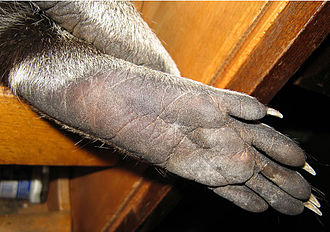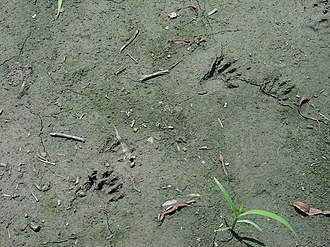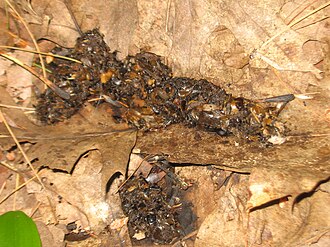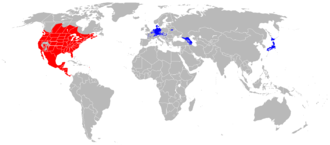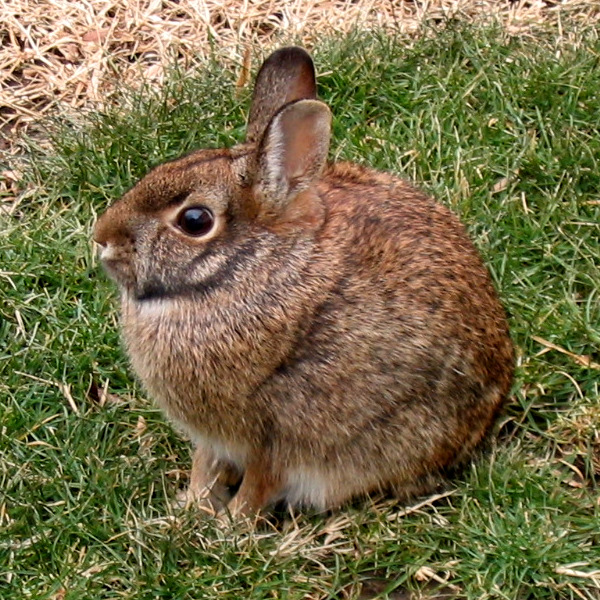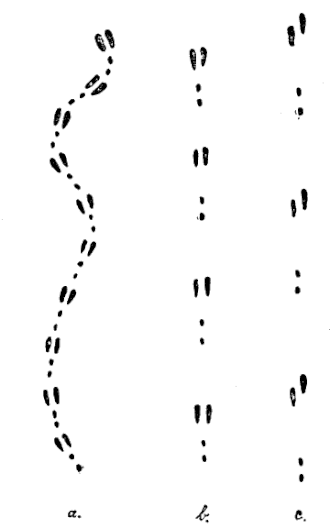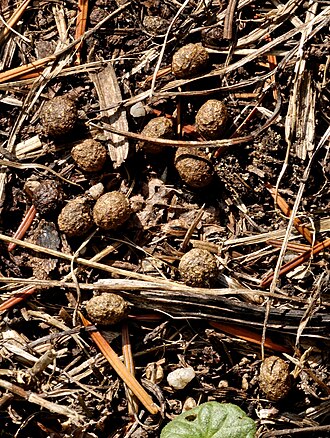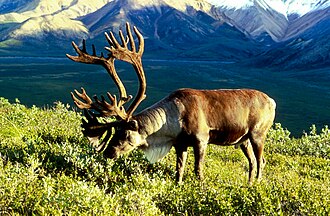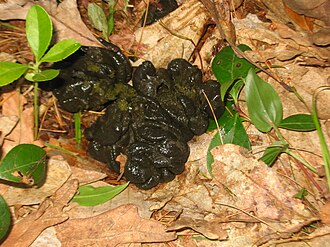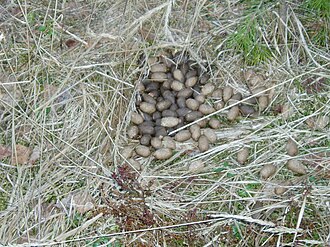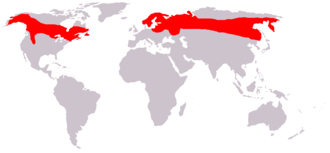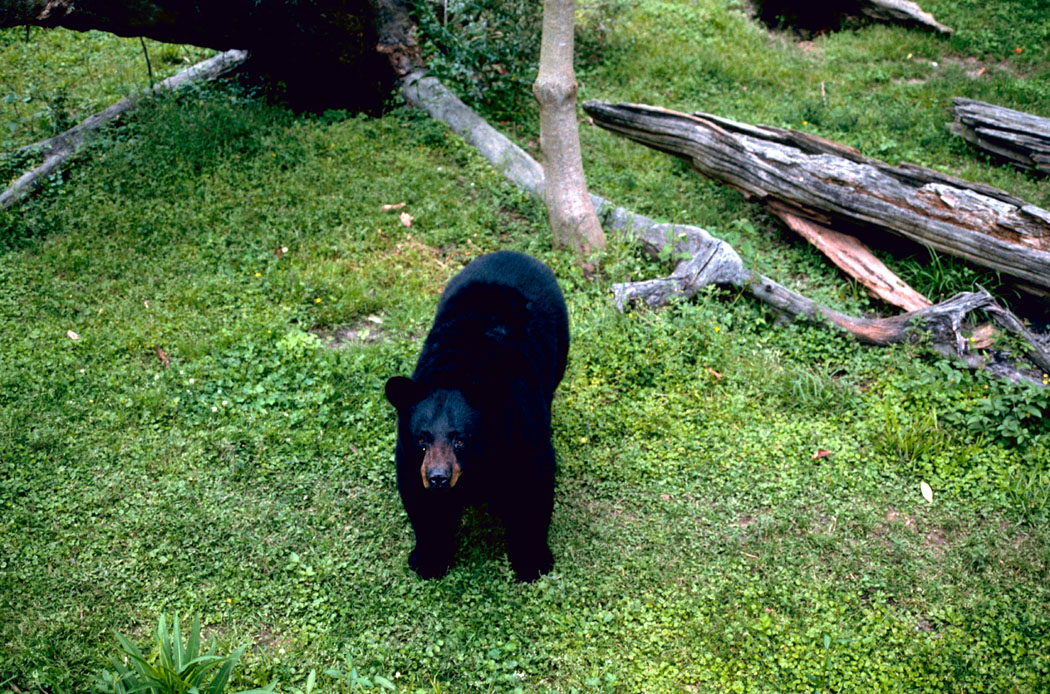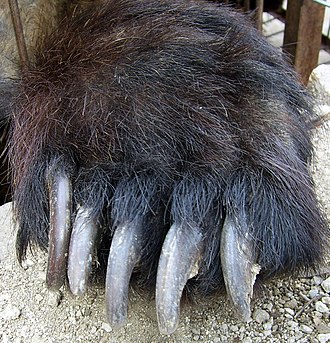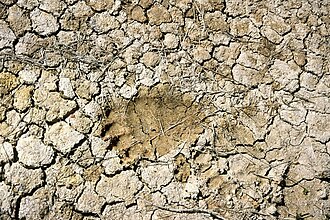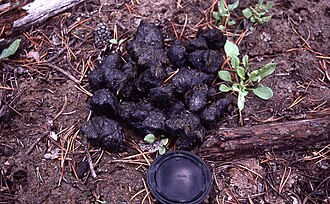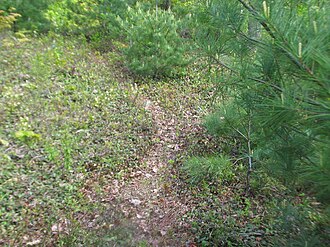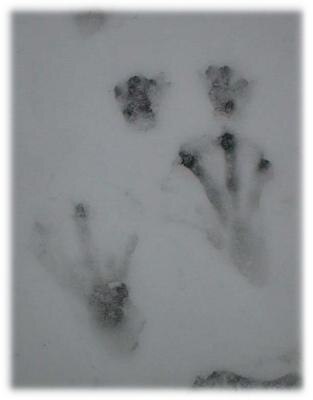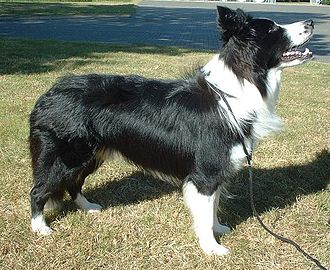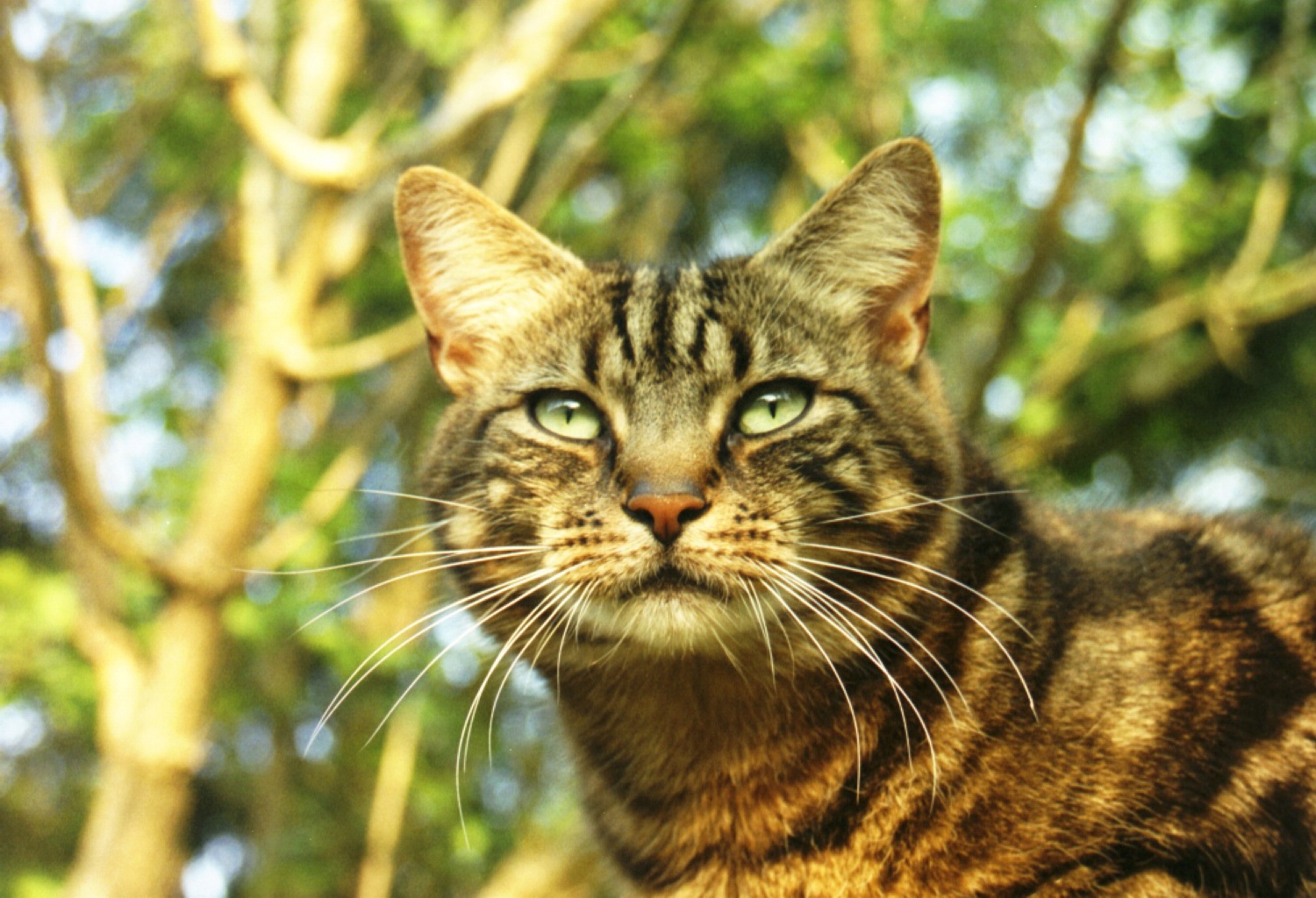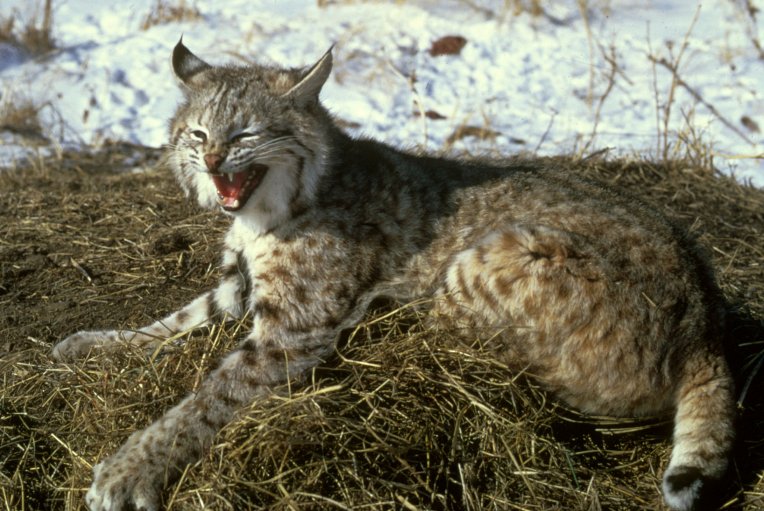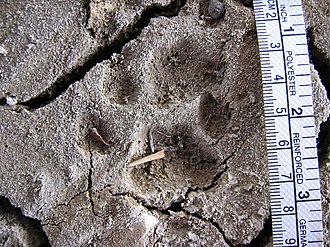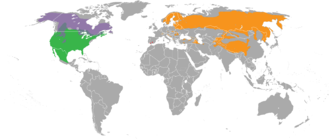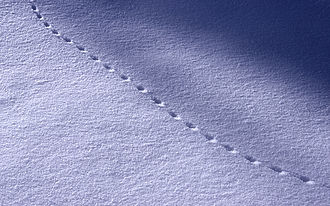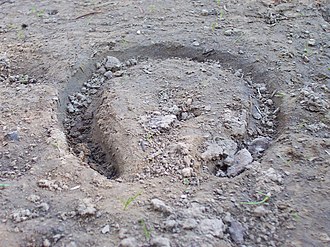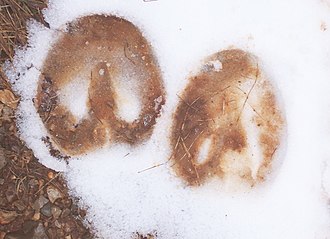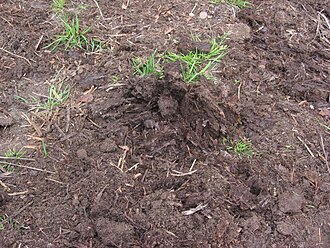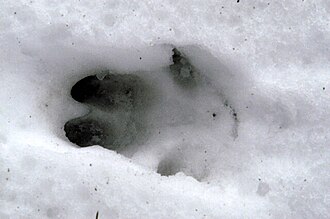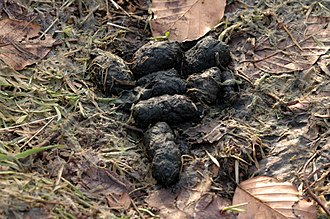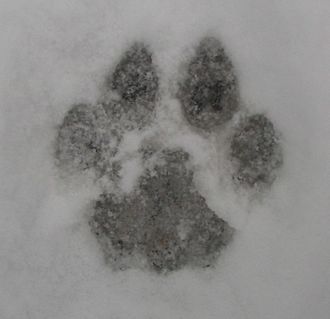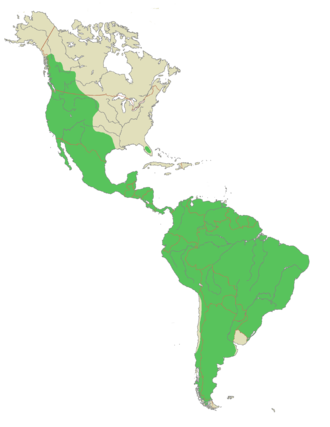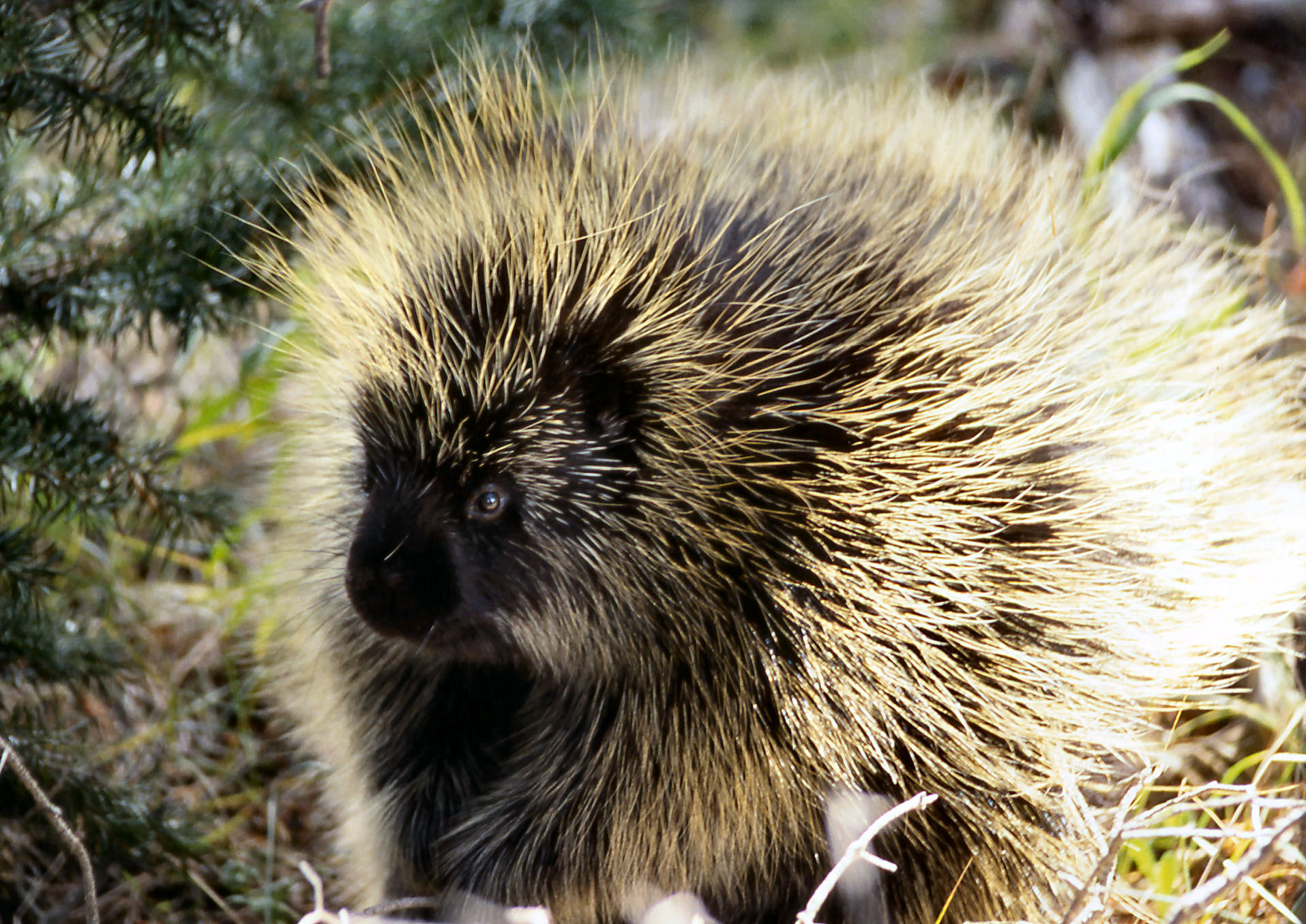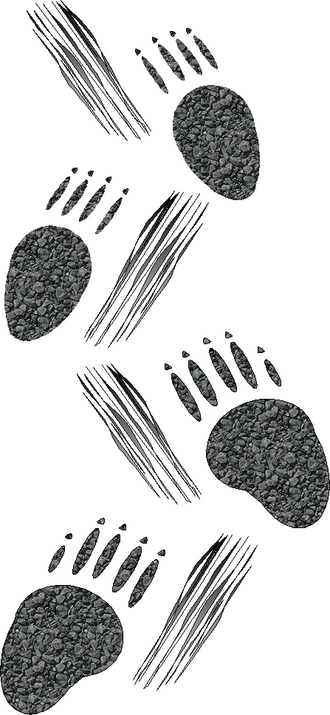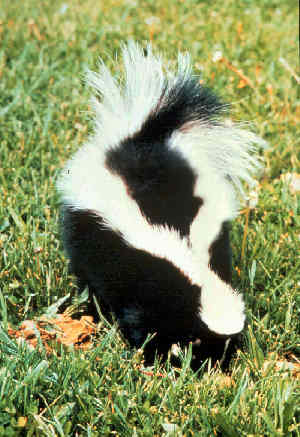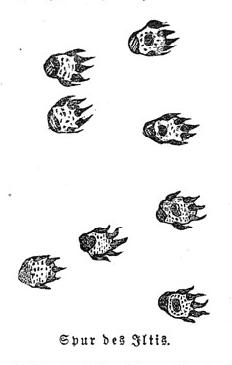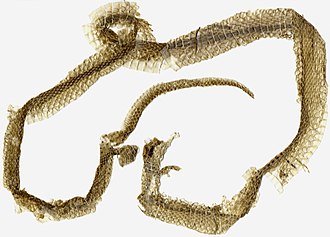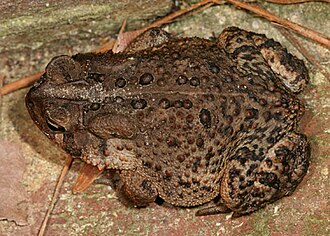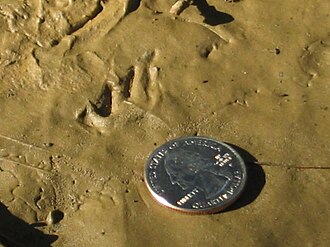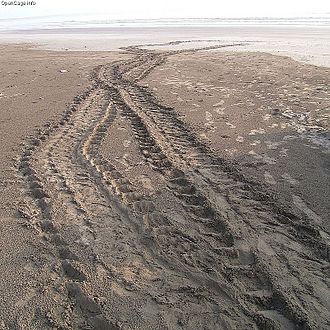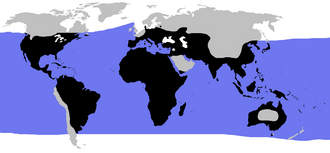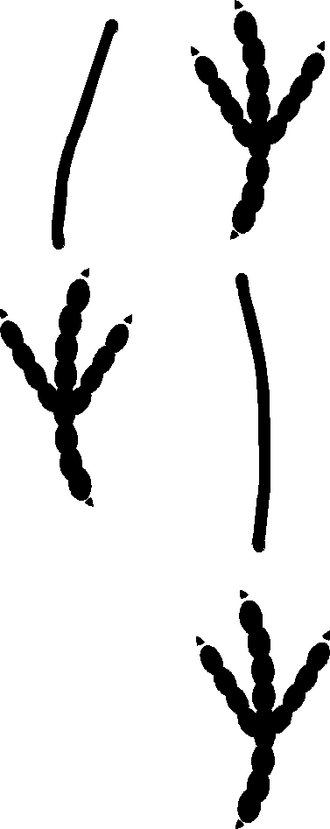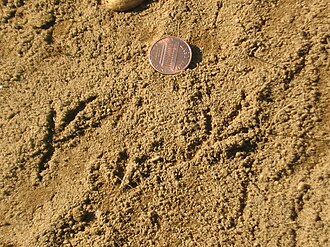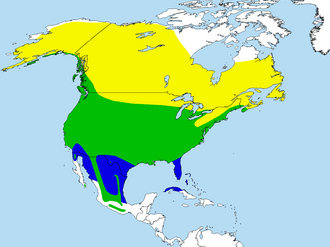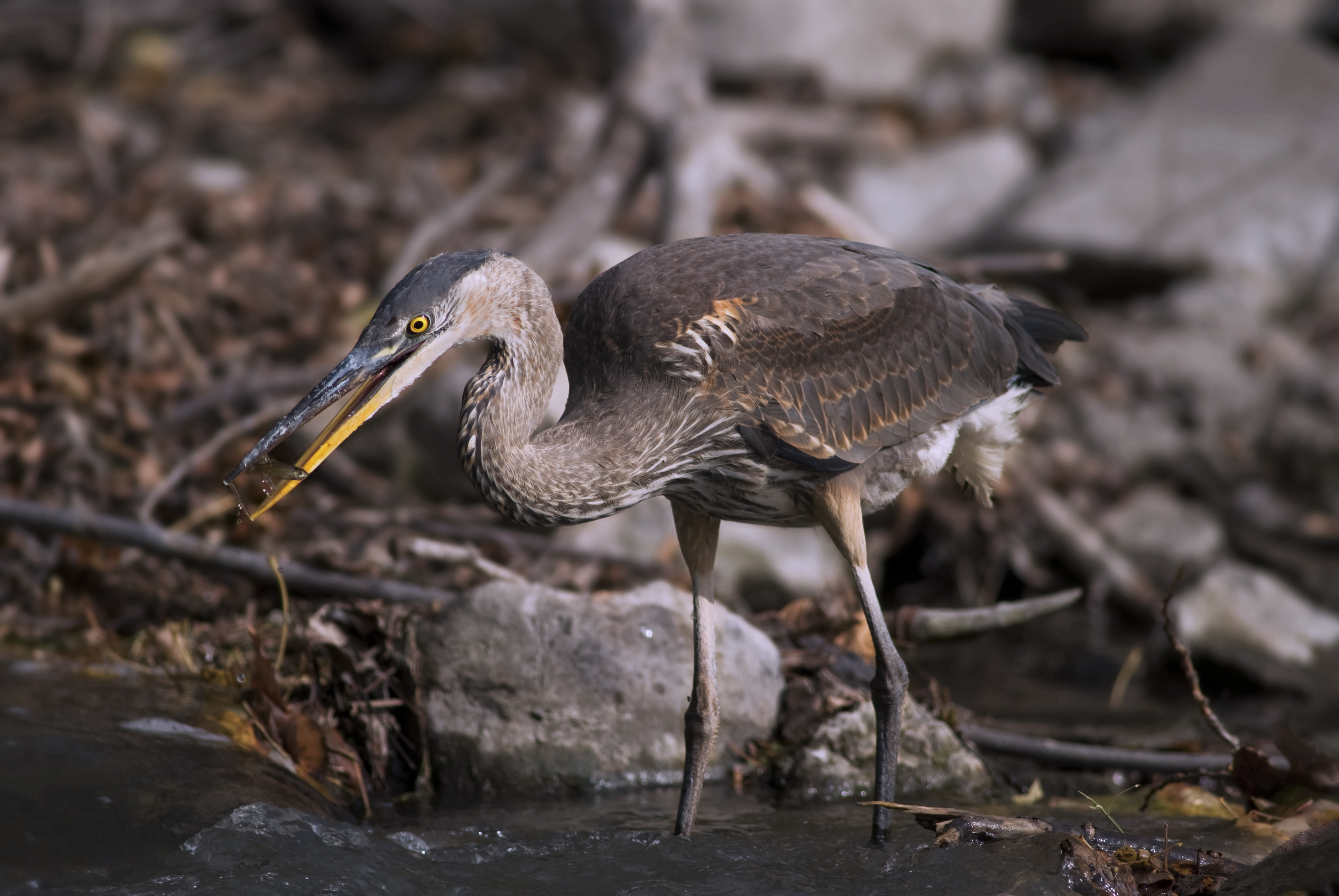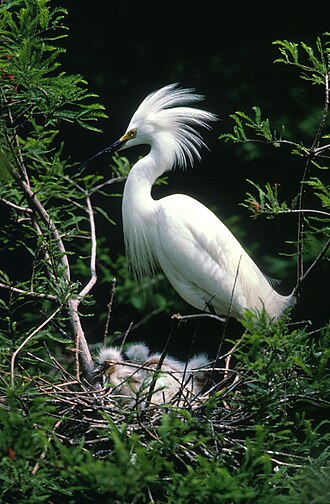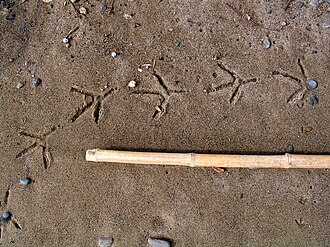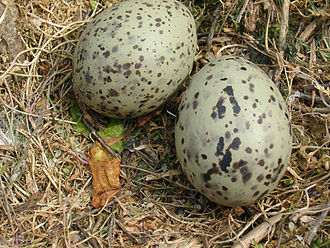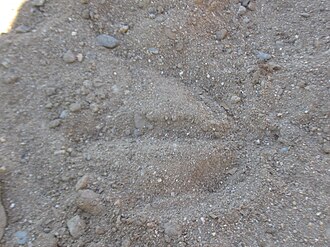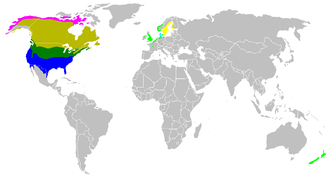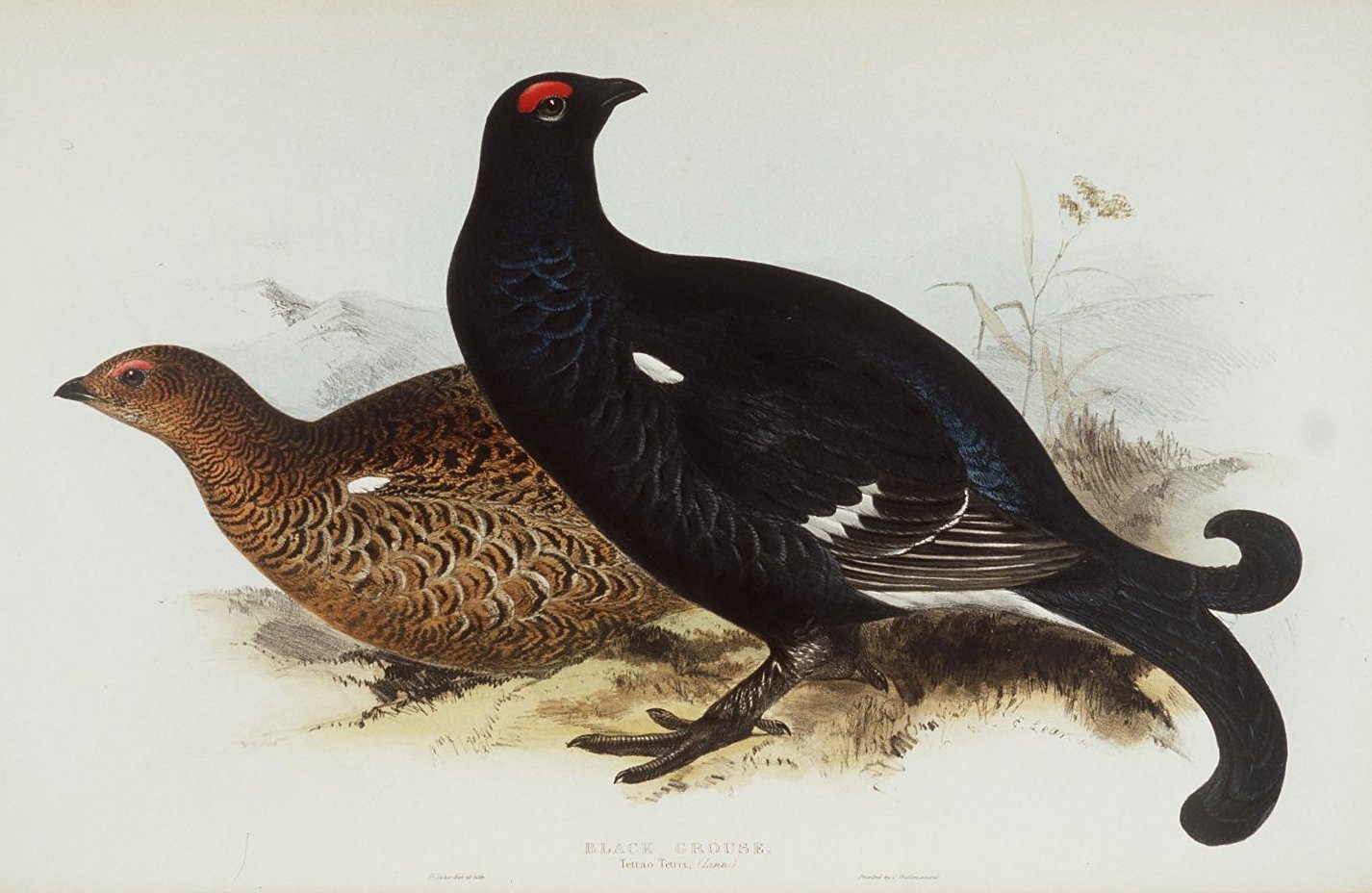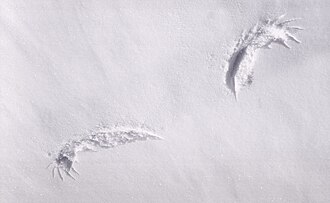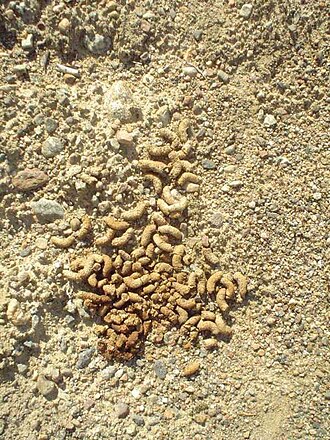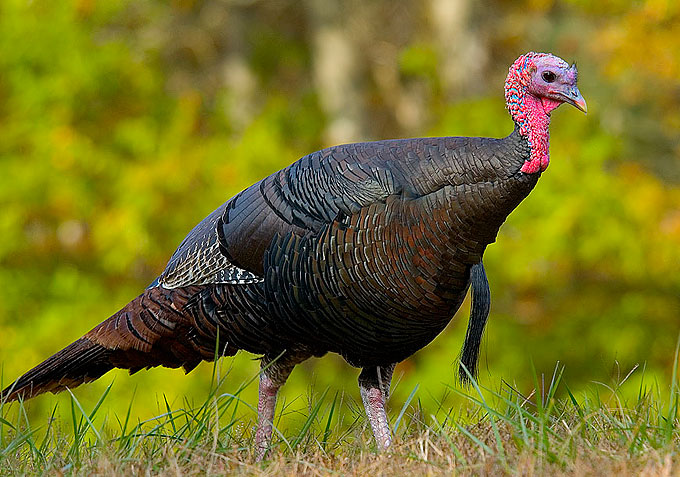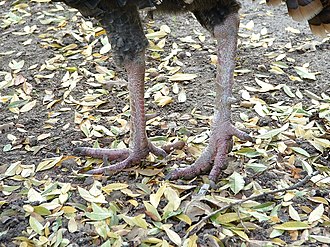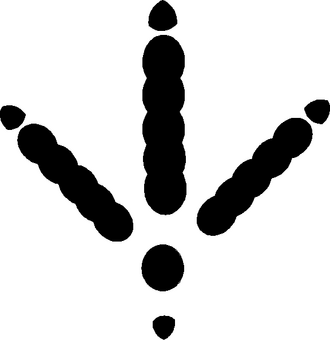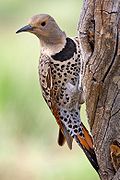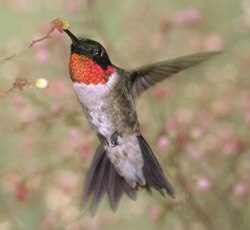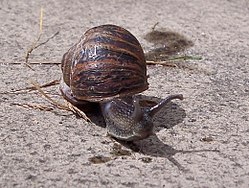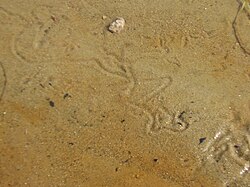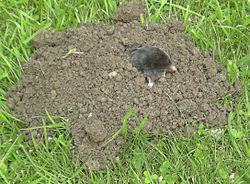Difference between revisions of "AY Honors/Animal Tracking/Answer Key"
(Eliminate from Zoology Master Award) |
m |
||
| (22 intermediate revisions by 3 users not shown) | |||
| Line 1: | Line 1: | ||
| − | < | + | {{HonorSubpage}} |
| − | <noinclude><translate><!--T: | + | |
| + | <section begin="Body" /> | ||
| + | |||
| + | {{ansreq|page={{#titleparts:{{PAGENAME}}|2|1}}|num=1}} | ||
| + | <noinclude><translate><!--T:141--> | ||
</noinclude> | </noinclude> | ||
| − | + | <!-- 1. Know ten kinds of tracks, including two kinds of bird tracks. Make plaster casts of five. --> | |
| − | + | {{:AY Honors/Basic Casting Techniques}} | |
| − | |||
| − | |||
| − | |||
| − | |||
| − | |||
| − | |||
| − | |||
| − | |||
| − | |||
| − | |||
| − | {{: | ||
===Casting Tracks in Snow=== <!--T:3--> | ===Casting Tracks in Snow=== <!--T:3--> | ||
| − | Snow is difficult to cast because it is not nearly as firm as mud. | + | Snow is difficult to cast because it is not nearly as firm as mud. Furthermore, plaster generates heat when it is mixed, and this can easily melt the snow surrounding the track. However, tracks are a lot easier to find in the snow, and casting ''can'' be done if you are careful. |
<!--T:4--> | <!--T:4--> | ||
| − | If the snow is powdery, spray water on it with a plant mister. | + | If the snow is powdery, spray water on it with a plant mister. Don't overdo it though. Allow the water to freeze, making a much harder surface than the untreated, powdery snow. Then place the ring around the track. To counteract the heat generated by the plaster, store the powdered plaster outside so that it can be cold when you mix it. Use cold water when mixing it, and make it even colder by tossing in a few fists full of snow. Stir the snow around until the water is really cold, but if it does not all melt, scoop it out. Leaving snow in the plaster will cause air bubbles in the final cast. Once the plaster is mixed, carefully pour it in the ring, but ''do not'' pour it directly in the track. Pour it next to the track and let it flow gently into the track itself. The spot where the plaster is poured will very likely leave an impression in the snow, and you do not want that to overlap the track. The mix may take well over an hour to cure, so you might want to leave it for a day. With any luck, you should have a nice cast of your track, though it is not likely to be a nice as the ones you can cast in mud. |
<!--T:5--> | <!--T:5--> | ||
| − | If you find these results unsatisfactory, you can purchase a product called ''Snow Print Wax''. | + | If you find these results unsatisfactory, you can purchase a product called ''Snow Print Wax''. This product is marketed to the law enforcement community for forensic track casting (of human foot prints and tire tracks). It is far more expensive than plaster, but is nearly certain to yield superior results. You can also try using joint compound. Joint compound is similar to plaster with two exceptions: it does not generate heat when setting, and it is not nearly as durable once it sets. If you use joint compound, you may wish to pour plaster over the finished cast to get a positive cast. The positive cast made from plaster will be far more durable than the negative original made from joint compound. |
===Identification=== <!--T:6--> | ===Identification=== <!--T:6--> | ||
| − | Figuring out what kind of animal left the tracks you have found can be difficult for the beginner. | + | Figuring out what kind of animal left the tracks you have found can be difficult for the beginner. Besides just knowing what its tracks look like, it helps to know something of the animal's habits, where it lives, what time of day (or year) it is active, etc. |
<!--T:7--> | <!--T:7--> | ||
| − | [http://www.beartrackersden.com/trackguide2003/trackguide2003.pdf This track guide] is an invaluable resource for identifying tracks. | + | [http://www.beartrackersden.com/trackguide2003/trackguide2003.pdf This track guide] is an invaluable resource for identifying tracks. If you find some tracks that have you stumped, take several detailed photographs of them, and post them to an online forum. The Bear-Tracker site (see references section) has an excellent and active forum. When taking pictures, it helps to disable flash, as that tends to fill in and eliminate the shadows - the resulting photo may end up looking like a featureless patch of dirt). Many cameras will automatically lengthen the exposure time to compensate for the lack of flash, and that means you will have to hold the camera impossibly still. A tripod ''really'' helps in this situation. |
<!--T:8--> | <!--T:8--> | ||
| Line 50: | Line 43: | ||
<!--T:10--> | <!--T:10--> | ||
| − | Raccoon tracks look like tiny human hands with four fingers and a thumb. | + | Raccoon tracks look like tiny human hands with four fingers and a thumb. The scat is tubular and rounded on the ends, often containing berry seeds. The scat also commonly holds parasites that can be inhaled, so it should not be handled. (Yeah. Right.) |
| range = North America | | range = North America | ||
}} | }} | ||
| Line 65: | Line 58: | ||
| order = Lagomorpha | | order = Lagomorpha | ||
| description = There are several types of rabbits that leave this type of track, including the Eastern Cottontail (shown), Desert Hare, New England Cottontail, Pikas, and many others. | | description = There are several types of rabbits that leave this type of track, including the Eastern Cottontail (shown), Desert Hare, New England Cottontail, Pikas, and many others. | ||
| − | Note that the prints in the front (top of the diagram) are from the hind legs, while the forefeet leave the two aligned prints in the rear. | + | Note that the prints in the front (top of the diagram) are from the hind legs, while the forefeet leave the two aligned prints in the rear. As a rabbit hops, it throws its forelegs between its hind legs, thus leaving the print as shown. |
}} | }} | ||
| Line 81: | Line 74: | ||
<!--T:13--> | <!--T:13--> | ||
| − | The deer that left the scat depicted above had been eating food high in water content causing the dung to clump together. | + | The deer that left the scat depicted above had been eating food high in water content causing the dung to clump together. When the diet consists of drier foods, the dung forms pellets similar to, but smaller than that of the moose (see below). |
| range = Deer are widely distributed, and hunted, with indigenous representatives in all continents except Antarctica and Australia, though Africa has only one native species confined to the Atlas Mountains in the northwest of the continent, the Red Deer. | | range = Deer are widely distributed, and hunted, with indigenous representatives in all continents except Antarctica and Australia, though Africa has only one native species confined to the Atlas Mountains in the northwest of the continent, the Red Deer. | ||
}} | }} | ||
| Line 97: | Line 90: | ||
| range_map = Moose distribution.png | | range_map = Moose distribution.png | ||
| range = Moose typically inhabit boreal and mixed deciduous forests of the Northern Hemisphere in temperate to subarctic climates. In North America, that includes almost all of Canada, most of central and western Alaska, much of New England, the upper Rocky Mountains, Northeastern Minnesota, and Michigan's Upper Peninsula and Isle Royale in Lake Superior. Isolated moose populations have been verified as far south as the mountains of Utah and Colorado. | | range = Moose typically inhabit boreal and mixed deciduous forests of the Northern Hemisphere in temperate to subarctic climates. In North America, that includes almost all of Canada, most of central and western Alaska, much of New England, the upper Rocky Mountains, Northeastern Minnesota, and Michigan's Upper Peninsula and Isle Royale in Lake Superior. Isolated moose populations have been verified as far south as the mountains of Utah and Colorado. | ||
| − | | description =Moose (Alces alces) is the North American name for the largest extant species in the deer family. The same animal is called the Elk in Europe. | + | | description =Moose (Alces alces) is the North American name for the largest extant species in the deer family. The same animal is called the Elk in Europe. Moose are distinguished by the palmate antlers of the males; other members of the family have antlers with a "twig-like" configuration. On average, an adult moose stands {{units|1.8–2.1 m|6–7 ft}} high at the shoulder. Males weigh {{units|380–535 kg|850–1180 pounds}} and females weigh {{units|270–360 kg|600–800 pounds}}. |
<!--T:15--> | <!--T:15--> | ||
| − | Moose prints are large, measuring {{units|12-20 cm|5-8 inches}} long. | + | Moose prints are large, measuring {{units|12-20 cm|5-8 inches}} long. They are very similar to deer tracks (they are a species of deer), but the hind toes do not print. The tracker was able to tell that the print shown above was made by a female because it was accompanied by the smaller prints of her calf. Bull moose are solitary animals and do not associate with the calves. |
}} | }} | ||
| Line 118: | Line 111: | ||
<!--T:17--> | <!--T:17--> | ||
| − | Bear tracks are large, being about the same length of a full-grown man's foot (or longer), and about twice as wide. | + | Bear tracks are large, being about the same length of a full-grown man's foot (or longer), and about twice as wide. They have five toes. Sometimes the claws will print, but not always. |
}} | }} | ||
| Line 135: | Line 128: | ||
| image3 = BurnabyLakeBeaverLodge.JPG | | image3 = BurnabyLakeBeaverLodge.JPG | ||
| caption3 = Beaver lodge | | caption3 = Beaver lodge | ||
| − | | range =Native to North America and Europe. | + | | range =Native to North America and Europe. |
| description = | | description = | ||
| − | Beavers are best known for their natural trait of building dams in rivers and streams, and building their homes (known as beaver lodges) in the resulting pond. Beaver sign is usually quite obvious as they cause tremendous changes in their environments, from building ponds and lodges, to cutting down even very large trees, to storing young branches in the mud. | + | Beavers are best known for their natural trait of building dams in rivers and streams, and building their homes (known as beaver lodges) in the resulting pond. Beaver sign is usually quite obvious as they cause tremendous changes in their environments, from building ponds and lodges, to cutting down even very large trees, to storing young branches in the mud. In the image shown here, beavers have worn a trail through the brush. |
<!--T:19--> | <!--T:19--> | ||
| − | Beaver scat is extremely difficult to find, as they have a habit of eliminating in the water. | + | Beaver scat is extremely difficult to find, as they have a habit of eliminating in the water. However, they leave more sign than any other creature except man. Beaver dams, lodges, and cut trees are very obvious signs of their presence. |
}} | }} | ||
| Line 156: | Line 149: | ||
| scat_image = | | scat_image = | ||
| range = | | range = | ||
| − | | description = The tracks left by members of the canine family are extremely difficult to tell apart. | + | | description = The tracks left by members of the canine family are extremely difficult to tell apart. Their prints consist of four toes and a pad. These animals are unable to retract their claws, so the claw marks usually print. |
}} | }} | ||
| Line 170: | Line 163: | ||
| scat_caption = | | scat_caption = | ||
| range = | | range = | ||
| − | | description =This is, of course, the standard house cat. | + | | description =This is, of course, the standard house cat. Note that cats have retractable claws, and they retract them when they walk. You should not find any claw marks in a cat track. |
}} | }} | ||
====Lynx and Bobcats==== | ====Lynx and Bobcats==== | ||
| Line 184: | Line 177: | ||
| range_map =Lynx range.png | | range_map =Lynx range.png | ||
| range = | | range = | ||
| − | | description =Lynx have short tails and characteristic tufts of black hair on the tip of the ears. They have a ruff under the neck, which has black bars (not very visible), resembling a bow tie. They have large paws padded for walking on snow and long whiskers on the face. The body color varies from light brown to grey; and occasionally, is marked with dark brown spots, especially on the limbs. | + | | description =Lynx have short tails and characteristic tufts of black hair on the tip of the ears. They have a ruff under the neck, which has black bars (not very visible), resembling a bow tie. They have large paws padded for walking on snow and long whiskers on the face. The body color varies from light brown to grey; and occasionally, is marked with dark brown spots, especially on the limbs. The tracks of the lynx look almost exactly the same as the tracks of the domestic cat, except that they are larger. |
}} | }} | ||
| Line 220: | Line 213: | ||
For centuries horses have been one of the most economically important domesticated animals, especially relied upon for farmwork and for transportation. Their importance declined following the introduction of mechanization. | For centuries horses have been one of the most economically important domesticated animals, especially relied upon for farmwork and for transportation. Their importance declined following the introduction of mechanization. | ||
}} | }} | ||
| − | |||
| − | |||
====Pig==== <!--T:25--> | ====Pig==== <!--T:25--> | ||
| Line 234: | Line 225: | ||
| scat_caption =Wild pig dung | | scat_caption =Wild pig dung | ||
| range = Domesticated world-wide | | range = Domesticated world-wide | ||
| − | | description =A pig has a snout for a nose, small eyes, and a small tail, which may be curly, kinked, or straight. It has a thick body, short legs, and coarse hair. There are four toes on each foot, with the two large middle toes used for walking. | + | | description =A pig has a snout for a nose, small eyes, and a small tail, which may be curly, kinked, or straight. It has a thick body, short legs, and coarse hair. There are four toes on each foot, with the two large middle toes used for walking. All four toes usually print, the the middle ones pointing forward and the on side splaying to the side. |
<br><br> | <br><br> | ||
Pigs are omnivores, which means that they consume both plants and animals. Pigs will scavenge and have been known to eat any kind of food, including dead insects, worms, tree bark, rotting carcasses, garbage, and even other pigs. In the wild, they are foraging animals, primarily eating leaves and grasses, roots, fruits and flowers. | Pigs are omnivores, which means that they consume both plants and animals. Pigs will scavenge and have been known to eat any kind of food, including dead insects, worms, tree bark, rotting carcasses, garbage, and even other pigs. In the wild, they are foraging animals, primarily eating leaves and grasses, roots, fruits and flowers. | ||
| Line 254: | Line 245: | ||
| scat_caption = | | scat_caption = | ||
| range =Sciurids live in almost every habitat from tropical rain forest to semiarid desert, avoiding only the high polar regions and the driest of deserts. | | range =Sciurids live in almost every habitat from tropical rain forest to semiarid desert, avoiding only the high polar regions and the driest of deserts. | ||
| − | | description =The hindlimbs of sciurids are generally longer than the forelimbs. They have four toes on the forefeet and five toes on the hindfeet. The paws on the forefeet include a thumb, although this is often poorly developed. The feet of sciurids also have a soft pad on the underside. | + | | description =The hindlimbs of sciurids are generally longer than the forelimbs. They have four toes on the forefeet and five toes on the hindfeet. The paws on the forefeet include a thumb, although this is often poorly developed. The feet of sciurids also have a soft pad on the underside. The front paws almost always print side-by-side behind and between the rear paws. Contrast with rabbit tracks in which the front paws print one behind another (but still behind and between the rear paws). |
}} | }} | ||
| Line 283: | Line 274: | ||
| scat_caption = | | scat_caption = | ||
| range = | | range = | ||
| − | | description = Opossums are small to medium-sized marsupials, with the largest about the size of a large house cat, and the smallest the size of a mouse. They tend to be semi-arboreal omnivores, although there are many exceptions. | + | | description = Opossums are small to medium-sized marsupials, with the largest about the size of a large house cat, and the smallest the size of a mouse. They tend to be semi-arboreal omnivores, although there are many exceptions. They have a plantigrade stance (feet flat on the ground) and the hind feet have an opposable digit with no claw. |
<br><br> | <br><br> | ||
Virginia Opossum tracks generally show five finger-like toes in both the fore and hind prints. The hind tracks are unusual and distinctive due to the opossum's opposable thumb, which generally prints at an angle of 90 degrees or greater to the other fingers (sometimes near 180 degrees). Individual adult tracks generally measure 1⅞ inches long by 2 inches wide (4.8 × 5.1 cm) for the fore prints and 2½ inches long by 2¼ inches wide (6.4 × 5.7 cm) for the hind prints. Opossums have claws on all fingers fore and hind except on the two thumbs (in the photograph, claw marks show as small holes just beyond the tip of each finger); these generally show in the tracks but may not. In a soft medium, such as the mud in this photograph, the foot pads will clearly show (these are the deep, darker areas where the fingers and toes meet the rest of the hand or foot, which have been filled with plant debris by wind due to the advanced age of the tracks). | Virginia Opossum tracks generally show five finger-like toes in both the fore and hind prints. The hind tracks are unusual and distinctive due to the opossum's opposable thumb, which generally prints at an angle of 90 degrees or greater to the other fingers (sometimes near 180 degrees). Individual adult tracks generally measure 1⅞ inches long by 2 inches wide (4.8 × 5.1 cm) for the fore prints and 2½ inches long by 2¼ inches wide (6.4 × 5.7 cm) for the hind prints. Opossums have claws on all fingers fore and hind except on the two thumbs (in the photograph, claw marks show as small holes just beyond the tip of each finger); these generally show in the tracks but may not. In a soft medium, such as the mud in this photograph, the foot pads will clearly show (these are the deep, darker areas where the fingers and toes meet the rest of the hand or foot, which have been filled with plant debris by wind due to the advanced age of the tracks). | ||
| Line 308: | Line 299: | ||
Porcupines are mainly active at night; on summer days, they often rest in trees. During the summer, they eat twigs, roots, stems, berries and other vegetation. In the winter, they mainly eat conifer needles and tree bark. They do not hibernate but sleep a lot and stay close to their dens in winter. The strength of the porcupine's defense has given it the ability to live a solitary life, unlike many herbivores. | Porcupines are mainly active at night; on summer days, they often rest in trees. During the summer, they eat twigs, roots, stems, berries and other vegetation. In the winter, they mainly eat conifer needles and tree bark. They do not hibernate but sleep a lot and stay close to their dens in winter. The strength of the porcupine's defense has given it the ability to live a solitary life, unlike many herbivores. | ||
<br> | <br> | ||
| − | Porcupine tracks are distinctive, with five toes printing on the hindfeet and four printing on the forefeet. | + | Porcupine tracks are distinctive, with five toes printing on the hindfeet and four printing on the forefeet. Their tracks have a pebbly texture to them. Often quills on the belly and the tail will leave brush marks along the trail. |
}} | }} | ||
| Line 322: | Line 313: | ||
| scat_caption = | | scat_caption = | ||
| range =Most of the North American continent north of Mexico | | range =Most of the North American continent north of Mexico | ||
| − | | description =The Striped Skunk has a black body with a white stripe along each side of its body; the two stripes join into a broader white area at the nape. Its forehead has a narrow white stripe. About the size of a house cat, it weighs 6 to 14 pounds (2.7-6.3 kg) with a body length (excluding the tail) of 13 to 18 inches (33-46 cm). The bushy tail is 7 to 10 inches long (18-25 cm), and sometimes has a white tip. | + | | description =The Striped Skunk has a black body with a white stripe along each side of its body; the two stripes join into a broader white area at the nape. Its forehead has a narrow white stripe. About the size of a house cat, it weighs 6 to 14 pounds (2.7-6.3 kg) with a body length (excluding the tail) of 13 to 18 inches (33-46 cm). The bushy tail is 7 to 10 inches long (18-25 cm), and sometimes has a white tip. The presence of a Striped Skunk is often first made apparent by its odor. It has well-developed anal scent glands (characteristic of all skunks) that can emit a highly unpleasant odor when the skunk feels threatened by another animal. The skunk is primarily nocturnal. Beginning its search for food shortly after sundown, it feeds on mice, eggs, carrion, insects, grubs, and berries. At sunrise, it retires to its den, which may be in a ground burrow, or beneath a building, boulder, or rock pile. While the male dens by itself, several females may live together. The Striped Skunk does not hibernate. |
}} | }} | ||
| Line 363: | Line 354: | ||
| caption2 = Shed skin of a snake | | caption2 = Shed skin of a snake | ||
| range = | | range = | ||
| − | | description = Snakes leave tracks that can be wavy or straight. | + | | description = Snakes leave tracks that can be wavy or straight. Their prints are little furrows that are a half inch wide or more, but it may be difficult the recognize them. Snakes shed as they grow, and you can sometimes find their castoff skins. |
<!--T:37--> | <!--T:37--> | ||
| Line 415: | Line 406: | ||
| range =The 40 or so members of this genus occur on all continents except South America and Antarctica, and on many offshore and oceanic islands. | | range =The 40 or so members of this genus occur on all continents except South America and Antarctica, and on many offshore and oceanic islands. | ||
| description =The genus Corvus consists of large Passerine birds. They are either black all over, or mainly black with white or grey patches. They range in size from the relatively small jackdaws (still larger than most other passerines) to the very large Common Raven of the Holarctic region and Thick-billed Raven of the highlands of Ethiopia. <br><br> | | description =The genus Corvus consists of large Passerine birds. They are either black all over, or mainly black with white or grey patches. They range in size from the relatively small jackdaws (still larger than most other passerines) to the very large Common Raven of the Holarctic region and Thick-billed Raven of the highlands of Ethiopia. <br><br> | ||
| − | Crows have three toes that point forward and one that points backwards. | + | Crows have three toes that point forward and one that points backwards. The front middle toe curves inward and like the rear toe, is longer than the two on the side. The tracks are typically between {{units|5-8cm|2-3 inches}} long and {{units|10 cm|4 inches}} apart. Crows often drag their feet when they walk, so you may find the drag marks as part of the track. Their talons (claws) may also print. Their foot prints will alternate, as their gait is somewhat human-like. |
}} | }} | ||
| Line 449: | Line 440: | ||
<!--T:43--> | <!--T:43--> | ||
| − | A good place to find pigeon tracks is beneath an overpass. | + | A good place to find pigeon tracks is beneath an overpass. Pigeons love to nest on the girders of bridges, and the ground underneath is often bare and powdery, so it takes tracks well. They leave copious amounts of guano (bird scat) beneath their roosts as well. Be careful of traffic. |
}} | }} | ||
| Line 465: | Line 456: | ||
| scat_caption = | | scat_caption = | ||
| range = | | range = | ||
| − | | description =The herons are wading birds in the Ardeidae family. Some are called egrets or bitterns instead of herons. | + | | description =The herons are wading birds in the Ardeidae family. Some are called egrets or bitterns instead of herons. The Great Blue Heron's tracks are {{units|15-20 cm|6-8 inches}} long. These brds tend to walk along the edge of the shore, either in the water, or on the land. Tracks in the water can be successfully cast if using plaster. |
}} | }} | ||
| Line 481: | Line 472: | ||
| scat_caption = | | scat_caption = | ||
| range =It breeds across North America, Europe and Asia. | | range =It breeds across North America, Europe and Asia. | ||
| − | | description =The average Herring Gull is 55-66 cm (22-26 inches) long with a wingspan of 138-150 cm. Adults in breeding plumage have a grey back and upperwings and white head and underparts. The wingtips are black with white spots known as "mirrors". | + | | description =The average Herring Gull is 55-66 cm (22-26 inches) long with a wingspan of 138-150 cm. Adults in breeding plumage have a grey back and upperwings and white head and underparts. The wingtips are black with white spots known as "mirrors". |
<br> | <br> | ||
Herring gulls have webbed feet. | Herring gulls have webbed feet. | ||
| Line 516: | Line 507: | ||
| scat_caption = | | scat_caption = | ||
| range = | | range = | ||
| − | | description =Ducks are mostly aquatic birds, mostly smaller than their relatives the swans and geese, and may be found in both fresh water and sea water. | + | | description =Ducks are mostly aquatic birds, mostly smaller than their relatives the swans and geese, and may be found in both fresh water and sea water. Ducks are sometimes confused with several types of unrelated water birds with similar forms, such as loons or divers, grebes, gallinules, and coots. |
}} | }} | ||
| Line 532: | Line 523: | ||
| scat_caption =Black Grouse droppings | | scat_caption =Black Grouse droppings | ||
| range =Grouse inhabit temperate and subarctic regions of the northern hemisphere. Most species are year-round residents, and do not migrate. | | range =Grouse inhabit temperate and subarctic regions of the northern hemisphere. Most species are year-round residents, and do not migrate. | ||
| − | | description =Grouse are a group of birds from the order Galliformes. Often considered a family Tetraonidae, the American Ornithologists' Union and many others include grouse as a subfamily Tetraoninae in the family Phasianidae. | + | | description =Grouse are a group of birds from the order Galliformes. Often considered a family Tetraonidae, the American Ornithologists' Union and many others include grouse as a subfamily Tetraoninae in the family Phasianidae. |
<!--T:49--> | <!--T:49--> | ||
| Line 554: | Line 545: | ||
<!--T:51--> | <!--T:51--> | ||
| − | Turkeys typically print three of their four toes. | + | Turkeys typically print three of their four toes. The three toes that print point forward and fan out. A dot made by their metatarsal prints where the three toes come together. Sometimes the fourth toe will print too, extending from the metatarsal print towards the back. Sometimes the claws will also print. If made in soft mud you may be able to make out the pebbly texture of the foot in the track. |
}} | }} | ||
| − | ==2. Name at least three things that tracks tell us. | + | <!--T:142--> |
| + | <noinclude></translate></noinclude> | ||
| + | {{CloseReq}} <!-- 1 --> | ||
| + | {{ansreq|page={{#titleparts:{{PAGENAME}}|2|1}}|num=2}} | ||
| + | <noinclude><translate><!--T:143--> | ||
| + | </noinclude> | ||
| + | <!-- 2. Name at least three things that tracks tell us. --> | ||
Animal tracks can tell us many things about the animal that made them, including: | Animal tracks can tell us many things about the animal that made them, including: | ||
# The species | # The species | ||
| Line 567: | Line 564: | ||
# Sometimes tracks can tell us the animal's age. | # Sometimes tracks can tell us the animal's age. | ||
| − | ==3. Trail some animal tracks, identify the animal if possible, and tell whether it was running or walking. Measure between the tracks of one animal when running and walking. | + | <!--T:144--> |
| − | ===Trailing and Identifying=== | + | <noinclude></translate></noinclude> |
| − | This is a perfect activity for an afternoon hike during a campout. | + | {{CloseReq}} <!-- 2 --> |
| + | {{ansreq|page={{#titleparts:{{PAGENAME}}|2|1}}|num=3}} | ||
| + | <noinclude><translate></noinclude> | ||
| + | <!-- 3. Trail some animal tracks, identify the animal if possible, and tell whether it was running or walking. Measure between the tracks of one animal when running and walking. --> | ||
| + | ===Trailing and Identifying=== <!--T:145--> | ||
| + | This is a perfect activity for an afternoon hike during a campout. Bring a tape measure so that you can measure the tracks. Bring some powdered plaster of Paris, and a mixing bowl so that you can make casts. You can also bring water, though it is better to keep that for ''drinking'' rather than mixing with plaster. You can probably find some water along the way, but just to make sure, you should bring ''some'' water for the plaster. You can refill a bottle for plaster making without treating it as long as you make it obvious that it is not fit for drinking (mud is a good indicator). | ||
<!--T:54--> | <!--T:54--> | ||
| − | Instruct your Pathfinders that they are to look for animal tracks along the way. | + | Instruct your Pathfinders that they are to look for animal tracks along the way. When they find some (or when you do), try to figure out the species by comparing the track to those in a field guide or those depicted in the answers to requirement one. See if you can find more tracks nearby. Which way was the animal moving? How far can you track it? |
===Walking vs Running=== <!--T:55--> | ===Walking vs Running=== <!--T:55--> | ||
| − | If the tracks are far apart relative to the size of the animal, it was most likely running. | + | If the tracks are far apart relative to the size of the animal, it was most likely running. Another indicator of running is that the tracks are deeper than those made by a walking creature (running makes the feet strike the ground with greater force). |
===Measuring Tracks=== | ===Measuring Tracks=== | ||
| − | There is nothing in this requirement to suggest that the tracks of one animal made while running and walking has to be a wild animal, or even that you have to find a set of tracks like these pre-made. | + | There is nothing in this requirement to suggest that the tracks of one animal made while running and walking has to be a wild animal, or even that you have to find a set of tracks like these pre-made. If you or a person in your group, or a person you know has a dog, take it to a sandy area and have it walk and run. Then get a tape measure and determine the distance between the tracks. |
<!--T:56--> | <!--T:56--> | ||
| − | You can also do this in a parking lot, but in order for the dog to leave tracks, you will need to dip its feet in tempera paint (which is non-toxic and water soluble). | + | You can also do this in a parking lot, but in order for the dog to leave tracks, you will need to dip its feet in tempera paint (which is non-toxic and water soluble). It is best to pour some paint in a paper plate. Use two colors - one for the front feet, and one for the back. This will make it a lot easier to tell the front prints from the hind. Lift the dog, and have a helper wet the dog's pads. Then put the dog down and walk it (use a leash). Re-apply the paint, and then allow the dog to run. You should now have two sets of prints from a single animal. Get out a tape measure, and take the measurements. |
<!--T:57--> | <!--T:57--> | ||
| − | The standard way to do this is to measure the distance between tracks made by the same foot. | + | The standard way to do this is to measure the distance between tracks made by the same foot. The distance between the left rear and the right front is almost meaningless. |
| − | ==4. Maintain a tracking station for at least three days by doing the following:== <!--T: | + | <!--T:146--> |
| − | + | <noinclude></translate></noinclude> | |
| − | Do not select a space ''too'' close to your campsite, because you do not want to attract them into your camp. | + | {{CloseReq}} <!-- 3 --> |
| + | {{ansreq|page={{#titleparts:{{PAGENAME}}|2|1}}|num=4}} | ||
| + | <noinclude><translate><!--T:147--> | ||
| + | </noinclude> | ||
| + | <!-- 4. Maintain a tracking station for at least three days by doing the following: --> | ||
| + | <noinclude></translate></noinclude> | ||
| + | {{ansreq|page={{#titleparts:{{PAGENAME}}|2|1}}|num=4a}} | ||
| + | <noinclude><translate><!--T:148--> | ||
| + | </noinclude> | ||
| + | Do not select a space ''too'' close to your campsite, because you do not want to attract them into your camp. Animals need water, so a really good place to select is around a source of fresh water. River banks, stream banks, near ponds, and the shores of lakes are all good places to find animal tracks. However, the place you select must be quiet. Avoid places that are frequented by people. | ||
| − | == | + | <!--T:149--> |
| − | There may already be some tracks in the area, but you are interested in fresh tracks. | + | <noinclude></translate></noinclude> |
| + | {{CloseReq}} <!-- 4a --> | ||
| + | {{ansreq|page={{#titleparts:{{PAGENAME}}|2|1}}|num=4b}} <!--T:59--> | ||
| + | <noinclude><translate><!--T:150--> | ||
| + | </noinclude> | ||
| + | There may already be some tracks in the area, but you are interested in fresh tracks. Smoothing the ground erases them and allows for fresh prints. A mason's trowel works very well for this in mud. You can also use a trowel on sand, but be careful not to pack it down. The smoother you can make the surface, the finer tracks you will be able to see. | ||
<!--T:60--> | <!--T:60--> | ||
| − | For dirt, it helps if you can sift it onto a flat surface and then lightly wet it. | + | For dirt, it helps if you can sift it onto a flat surface and then lightly wet it. If your garden hose has a "mist" setting, use that after sifting the dirt onto a flat surface. |
| − | == | + | <!--T:151--> |
| − | + | <noinclude></translate></noinclude> | |
| + | {{CloseReq}} <!-- 4b --> | ||
| + | {{ansreq|page={{#titleparts:{{PAGENAME}}|2|1}}|num=4c}} <!--T:61--> | ||
| + | <noinclude><translate><!--T:152--> | ||
| + | </noinclude> | ||
| + | |||
| + | <!--T:88--> | ||
| + | {{AY Honors/Problematic requirement | ||
| + | |Feeding wildlife is illegal in many jurisdictions | ||
| + | |Do not place food for the animals at the tracking station. Learn why feeding wild animals is illegal in many jurisdictions. | ||
| + | }} | ||
| + | |||
| + | <!--T:153--> | ||
| + | <noinclude></translate></noinclude> | ||
| + | {{CloseReq}} <!-- 4c --> | ||
| + | {{ansreq|page={{#titleparts:{{PAGENAME}}|2|1}}|num=4d}} <!--T:63--> | ||
| + | <noinclude><translate><!--T:154--> | ||
| + | </noinclude> | ||
| − | <!--T: | + | <!--T:89--> |
| − | + | {{AY Honors/Problematic requirement | |
| + | |Feeding wildlife is illegal in many jurisdictions | ||
| + | |Check each day for tracks and identify what animal made it. Cast, sketch or photograph at least one of the tracks. | ||
| + | }} | ||
| − | + | <!--T:90--> | |
| − | When camping, remember to store your food in a place where the animals cannot get to it. | + | When camping, remember to store your food in a place where the animals cannot get to it. Seal it tightly and place it out of the reach of raccoons and bears (both of which are very clever at getting food). Under no circumstances should you store food in a tent - especially in one that people will be sleeping in. A tent poses no barrier to a hungry skunk. |
<!--T:64--> | <!--T:64--> | ||
| − | The morning is the best time to check for tracks. | + | The morning is the best time to check for tracks. Most forest creatures are nocturnal, so in the morning the tracks will be freshest. Also, human visitors are less likely to trample the tracks before you get a chance to observe and if necessary, cast them. |
<!--T:65--> | <!--T:65--> | ||
| − | If you wish to photograph your tracks, it's best to do that in the early morning when the sunlight comes in at an angle. | + | If you wish to photograph your tracks, it's best to do that in the early morning when the sunlight comes in at an angle. If you wait until the sun is high overhead, the track will not cast a shadow and it will be difficult to see. Turn off your camera's flash or it will completely wash out the shadows and the track will not show up in the photo. If you want to experiment with artificial light, use a flashlight to illuminate the track from the side. Place a coin or a ruler (for scale) next to the track before taking the picture. Take lots of photos (digital cameras are ''great'' for this) and hope that at least one of them turns out. It takes a lot of practice! |
| − | ==5. Name two animals for each tracking group.== <!--T: | + | <!--T:155--> |
| − | + | <noinclude></translate></noinclude> | |
| − | + | {{CloseReq}} <!-- 4d --> | |
| − | + | {{CloseReq}} <!-- 4 --> | |
| − | + | {{ansreq|page={{#titleparts:{{PAGENAME}}|2|1}}|num=5}} | |
| + | <noinclude><translate><!--T:156--> | ||
| + | </noinclude> | ||
| + | <!-- 5. Name two animals for each tracking group. --> | ||
| + | <noinclude></translate></noinclude> | ||
| + | {{ansreq|page={{#titleparts:{{PAGENAME}}|2|1}}|num=5a}} | ||
| + | <noinclude><translate><!--T:157--> | ||
| + | </noinclude> | ||
| + | <noinclude></translate></noinclude> | ||
| + | {{CloseReq}} <!-- 5a --> | ||
| + | {{ansreq|page={{#titleparts:{{PAGENAME}}|2|1}}|num=5b}} | ||
| + | <noinclude><translate><!--T:158--> | ||
| + | </noinclude> | ||
| + | <noinclude></translate></noinclude> | ||
| + | {{CloseReq}} <!-- 5b --> | ||
| + | {{ansreq|page={{#titleparts:{{PAGENAME}}|2|1}}|num=5c}} | ||
| + | <noinclude><translate><!--T:159--> | ||
| + | </noinclude> | ||
| + | <noinclude></translate></noinclude> | ||
| + | {{CloseReq}} <!-- 5c --> | ||
| + | {{ansreq|page={{#titleparts:{{PAGENAME}}|2|1}}|num=5d}} | ||
| + | <noinclude><translate><!--T:160--> | ||
| + | </noinclude> | ||
| − | ==6. Name four signs of the presence of mammals. | + | <!--T:161--> |
| − | Animals leave many indications that they were present. | + | <noinclude></translate></noinclude> |
| − | ;Tracks: Not only footprints, but marks left on the ground by the tail or by other body parts. | + | {{CloseReq}} <!-- 5d --> |
| − | ;Scat: Scat is another word for animal droppings or manure. | + | {{CloseReq}} <!-- 5 --> |
| − | ;Fur and antlers: Animals may leave bits of fur behind if it gets caught in a tree's bark, or in thorns. | + | {{ansreq|page={{#titleparts:{{PAGENAME}}|2|1}}|num=6}} |
| − | ;Cuttings: Cuttings are things such as acorn shells which have been nibbled on. | + | <noinclude><translate><!--T:162--> |
| − | ;Scratches on trees: Bears, members of the cat family, and other predators will sharpen their claws on tree trunks. | + | </noinclude> |
| + | <!-- 6. Name four signs of the presence of mammals. --> | ||
| + | Animals leave many indications that they were present. These are collectively called ''sign''. Sign includes: | ||
| + | ;Tracks: Not only footprints, but marks left on the ground by the tail or by other body parts. Beavers, muskrats, mice, and rats all leave tail marks on the ground. | ||
| + | ;Scat: Scat is another word for animal droppings or manure. | ||
| + | ;Fur and antlers: Animals may leave bits of fur behind if it gets caught in a tree's bark, or in thorns. In the fall deer drop antlers. | ||
| + | ;Cuttings: Cuttings are things such as acorn shells which have been nibbled on. Deer and squirrel often leave them behind. | ||
| + | ;Scratches on trees: Bears, members of the cat family, and other predators will sharpen their claws on tree trunks. Sometimes they will do this to mark their territory. Porcupines will eat the bark all the way around the trunk of a conifer, often killing it. | ||
;Damage to trees: beavers especially, but also other animals will damage trees by breaking branches, chewing twigs, and gnawing bark. | ;Damage to trees: beavers especially, but also other animals will damage trees by breaking branches, chewing twigs, and gnawing bark. | ||
| − | ;Scent Posts: Many animals mark their territory by urinating on trees or other prominent items. | + | ;Scent Posts: Many animals mark their territory by urinating on trees or other prominent items. If you are walking through the woods and smell a strong musky odor, look around — you may find other sign. |
| − | ;Carcasses: Once a predator has had its fill of a kill, it will leave the carcass. | + | ;Carcasses: Once a predator has had its fill of a kill, it will leave the carcass. Some animals will guard their carcasses though so they can feed on them again after they've digested some of the previous meal, so be careful if you find one. |
| − | ==7. Distinguish between rabbit and squirrel tracks, and between dog and cat family tracks. | + | <!--T:163--> |
| − | ===Rabbit vs Squirrel Tracks=== | + | <noinclude></translate></noinclude> |
| − | Rabbits leave a distinctive pattern when they bound along. | + | {{CloseReq}} <!-- 6 --> |
| + | {{ansreq|page={{#titleparts:{{PAGENAME}}|2|1}}|num=7}} | ||
| + | <noinclude><translate></noinclude> | ||
| + | <!-- 7. Distinguish between rabbit and squirrel tracks, and between dog and cat family tracks. --> | ||
| + | ===Rabbit vs Squirrel Tracks=== <!--T:164--> | ||
| + | Rabbits leave a distinctive pattern when they bound along. The front feet are thrown between the hind feet, but one of them is almost invariably thrown farther back, and the two forefeet often print one behind the other (though sometimes they print side-by-side). A rabbit's hind feet leave larger oval-shaped prints about the size of a man's thumbprint. Since they use the hind feet rather than their forefeet to leap forward, they will push out some material behind them. It may be difficult to make out individual toes in a rabbit print. | ||
<!--T:69--> | <!--T:69--> | ||
| − | Squirrels are also bounders, and like the rabbit, they throw both forefeet between their hind feet. | + | Squirrels are also bounders, and like the rabbit, they throw both forefeet between their hind feet. But unlike the rabbit, the squirrel's forefeet generally print side-by-side. The hind feet should print five toes (four finger-like and one thumb-like) and no claws. The forefeet should print only four toes. |
<!--T:70--> | <!--T:70--> | ||
| Line 638: | Line 708: | ||
<!--T:71--> | <!--T:71--> | ||
| − | If you're lucky enough to find a large set of tracks in the snow, and they lead to the base of a tree, it is almost certainly a squirrel, as rabbits cannot climb trees. | + | If you're lucky enough to find a large set of tracks in the snow, and they lead to the base of a tree, it is almost certainly a squirrel, as rabbits cannot climb trees. The only way a rabbit could leave such a trail is if it had been abducted by aliens (or by an owl!) |
===Dog vs Cat Tracks=== <!--T:72--> | ===Dog vs Cat Tracks=== <!--T:72--> | ||
| − | Unlike dogs, cats can retract their claws, and they do so when walking. | + | Unlike dogs, cats can retract their claws, and they do so when walking. Therefore, you should expect to find claw marks present in dog tracks, but absent in cat tracks. In general dogs tracks are larger than cat tracks, but you cannot rely on this alone, as there are some very small dogs and some very large cats. |
| − | ==8. Name two groups of animals (mammals, birds, insects, etc.) that leave tracks or scent trails that another of their kind can follow. | + | <!--T:165--> |
| − | Some species of mammal and some species of insect leave scent trails to communicate with others of their species. | + | <noinclude></translate></noinclude> |
| + | {{CloseReq}} <!-- 7 --> | ||
| + | {{ansreq|page={{#titleparts:{{PAGENAME}}|2|1}}|num=8}} | ||
| + | <noinclude><translate><!--T:166--> | ||
| + | </noinclude> | ||
| + | <!-- 8. Name two groups of animals (mammals, birds, insects, etc.) that leave tracks or scent trails that another of their kind can follow. --> | ||
| + | Some species of mammal and some species of insect leave scent trails to communicate with others of their species. Canines, cats, deer, moose, alpaca and llama, and others will mark their territory with urine. | ||
<!--T:74--> | <!--T:74--> | ||
| − | Ants lay down pheromone trails that lead to food sources. | + | Ants lay down pheromone trails that lead to food sources. If you have ever seen a column of ants scurrying about in single file, you can be sure they are following a scent trail. |
| − | ==9. Name two birds for each of the following type of tracks:== <!--T: | + | <!--T:167--> |
| − | + | <noinclude></translate></noinclude> | |
| − | Most perching birds (passerines) hop, though many can both hop and walk (such as ravens, blackbirds, and robins). | + | {{CloseReq}} <!-- 8 --> |
| + | {{ansreq|page={{#titleparts:{{PAGENAME}}|2|1}}|num=9}} | ||
| + | <noinclude><translate><!--T:168--> | ||
| + | </noinclude> | ||
| + | <!-- 9. Name two birds for each of the following type of tracks: --> | ||
| + | <noinclude></translate></noinclude> | ||
| + | {{ansreq|page={{#titleparts:{{PAGENAME}}|2|1}}|num=9a}} | ||
| + | <noinclude><translate><!--T:169--> | ||
| + | </noinclude> | ||
| + | Most perching birds (passerines) hop, though many can both hop and walk (such as ravens, blackbirds, and robins). Jays, sparrows, cardinals, titmice, nuthatches, finches, and many others hop. The tracks of hopping birds often print side-by-side as they tend to keep their feet together as they hop. | ||
| − | == | + | <!--T:170--> |
| − | Walking birds include crows, most waterfowl and shore birds (sandpipers, egrets, herons, etc.), and most game birds (wild turkeys, geese, ducks, grouse, doves, pigeons, etc.). | + | <noinclude></translate></noinclude> |
| + | {{CloseReq}} <!-- 9a --> | ||
| + | {{ansreq|page={{#titleparts:{{PAGENAME}}|2|1}}|num=9b}} <!--T:76--> | ||
| + | <noinclude><translate><!--T:171--> | ||
| + | </noinclude> | ||
| + | Walking birds include crows, most waterfowl and shore birds (sandpipers, egrets, herons, etc.), and most game birds (wild turkeys, geese, ducks, grouse, doves, pigeons, etc.). The tracks of walking birds typically alternate left to right as they lift their feet one at a time. | ||
| − | ==10. Besides tracks, give two other signs of the presence of birds. | + | <!--T:172--> |
| + | <noinclude></translate></noinclude> | ||
| + | {{CloseReq}} <!-- 9b --> | ||
| + | {{CloseReq}} <!-- 9 --> | ||
| + | {{ansreq|page={{#titleparts:{{PAGENAME}}|2|1}}|num=10}} | ||
| + | <noinclude><translate><!--T:173--> | ||
| + | </noinclude> | ||
| + | <!-- 10. Besides tracks, give two other signs of the presence of birds. --> | ||
* Feathers | * Feathers | ||
* Droppings | * Droppings | ||
| Line 662: | Line 759: | ||
* Birdsongs (if you can hear them, they must be present!) | * Birdsongs (if you can hear them, they must be present!) | ||
* Eggs or eggshells | * Eggs or eggshells | ||
| − | * Pellets: Birds of prey regurgitate the indigestible portions of their meals. | + | * Pellets: Birds of prey regurgitate the indigestible portions of their meals. Birds have no teeth so they rip their prey apart with their beaks and swallow large chunks at a time. Then they digest the soft portions (such as meat) leaving the hair and bones behind to collect into pellets. They cough up these pellets which can be found by the astute observer. |
| − | ==11. Name two birds identified by their flying patterns. | + | <!--T:174--> |
| + | <noinclude></translate></noinclude> | ||
| + | {{CloseReq}} <!-- 10 --> | ||
| + | {{ansreq|page={{#titleparts:{{PAGENAME}}|2|1}}|num=11}} | ||
| + | <noinclude><translate><!--T:175--> | ||
| + | </noinclude> | ||
| + | <!-- 11. Name two birds identified by their flying patterns. --> | ||
<gallery perrow=2 widths="300px"> | <gallery perrow=2 widths="300px"> | ||
Image:Northern Flicker.jpg|'''Northern Flicker:''' Like many woodpeckers, the flicker's flight is undulating. The repeated cycle of a quick succession of flaps followed by a pause creates an effect comparable to a rollercoaster. | Image:Northern Flicker.jpg|'''Northern Flicker:''' Like many woodpeckers, the flicker's flight is undulating. The repeated cycle of a quick succession of flaps followed by a pause creates an effect comparable to a rollercoaster. | ||
| Line 671: | Line 774: | ||
Canadian geese can be identified from a great distance by their distinctive V formation. | Canadian geese can be identified from a great distance by their distinctive V formation. | ||
| − | ==12. In your area, observe tracks or trail of one or more of the following:== <!--T: | + | <!--T:176--> |
| − | + | <noinclude></translate></noinclude> | |
| − | Tracks for these animals are described in an earlier requirement. | + | {{CloseReq}} <!-- 11 --> |
| + | {{ansreq|page={{#titleparts:{{PAGENAME}}|2|1}}|num=12}} | ||
| + | <noinclude><translate><!--T:177--> | ||
| + | </noinclude> | ||
| + | <!-- 12. In your area, observe tracks or trail of one or more of the following: --> | ||
| + | <noinclude></translate></noinclude> | ||
| + | {{ansreq|page={{#titleparts:{{PAGENAME}}|2|1}}|num=12a}} | ||
| + | <noinclude><translate><!--T:178--> | ||
| + | </noinclude> | ||
| + | Tracks for these animals are described in an earlier requirement. Perhaps the easiest of these three to find are the tracks of the frog. Find a pond where frogs live, and smooth the mud as described in requirement 4. Another technique is to visit a frog pond and watch as they leap into the water at your approach. Look carefully at the spot from which they leap, and you may be able to see the track. If you have any Pathfinders brave enough, have one capture a frog, and then gently transport it to a muddy area where it can leave tracks. Put it in the center of this area and observe the tracks it makes. Recapture the frog and return it to its home when you are finished. | ||
| − | == | + | <!--T:179--> |
| + | <noinclude></translate></noinclude> | ||
| + | {{CloseReq}} <!-- 12a --> | ||
| + | {{ansreq|page={{#titleparts:{{PAGENAME}}|2|1}}|num=12d}} <!--T:80--> | ||
| + | <noinclude><translate><!--T:180--> | ||
| + | </noinclude> | ||
[[Image:Gardensnail.jpg|thumb|200px|left|Snail leaving a trail]] | [[Image:Gardensnail.jpg|thumb|200px|left|Snail leaving a trail]] | ||
[[Image:Mussel_tracks.jpg|thumb|200px|right|Mussel tracks at the edge of a pond.]] | [[Image:Mussel_tracks.jpg|thumb|200px|right|Mussel tracks at the edge of a pond.]] | ||
| − | When most people think of mollusks, they think of clams and mussels. | + | When most people think of mollusks, they think of clams and mussels. For this honor, it is beneficial to remember that snails and slugs are also members of the mollusk family, especially since they leave easily followed trails. |
<!--T:81--> | <!--T:81--> | ||
| − | The best time to find snail or slug tracks is in the early morning. | + | The best time to find snail or slug tracks is in the early morning. Look on the sidewalk near flower beds for the tell-tale slimy trails these creatures leave as they slip along. As these slime trails dry, they turn white and flaky, often curling at the edges. |
<!--T:82--> | <!--T:82--> | ||
| − | That said, it is also possible to find the tracks of clams and mussels. | + | That said, it is also possible to find the tracks of clams and mussels. The photo on the right shows the tracks left by a mussel in shallow water (about {{units|10 cm|2 inches}} deep) at the edge of a fresh water pond. |
{{clear}} | {{clear}} | ||
| − | == | + | <!--T:181--> |
| − | Find a place where you have seen earthworms in the past, preferably where the dirt is bare (i.e., no grass). | + | <noinclude></translate></noinclude> |
| + | {{CloseReq}} <!-- 12d --> | ||
| + | {{ansreq|page={{#titleparts:{{PAGENAME}}|2|1}}|num=12e}} <!--T:83--> | ||
| + | <noinclude><translate><!--T:182--> | ||
| + | </noinclude> | ||
| + | Find a place where you have seen earthworms in the past, preferably where the dirt is bare (i.e., no grass). Soak the area with water to drive the worms out of the ground. Worms need air, so when it rains (or when a Pathfinder soaks the ground with a hose), they will come to the surface. They might not come out immediately, so you should plan to return a day later to look for tracks in the mud you've made. | ||
| − | == | + | <!--T:183--> |
| + | <noinclude></translate></noinclude> | ||
| + | {{CloseReq}} <!-- 12e --> | ||
| + | {{ansreq|page={{#titleparts:{{PAGENAME}}|2|1}}|num=12f}} <!--T:84--> | ||
| + | <noinclude><translate><!--T:184--> | ||
| + | </noinclude> | ||
[[Image:Maulwurf (Talpa).jpg|thumb|200px|left|Mole atop its mole hill]] | [[Image:Maulwurf (Talpa).jpg|thumb|200px|left|Mole atop its mole hill]] | ||
[[Image:Mole tunnel.jpg|thumb|250px|right|Mole tunnel]] | [[Image:Mole tunnel.jpg|thumb|250px|right|Mole tunnel]] | ||
| − | Moles are burrowing rodents, and if you have them in your yard, it is not difficult to see where they have been. | + | Moles are burrowing rodents, and if you have them in your yard, it is not difficult to see where they have been. As they tunnel along, they raise the earth above their tunnels. At the end of the tunnel you may find a hole surrounded by a "mole hill". |
{{clear}} | {{clear}} | ||
| + | <!--T:185--> | ||
| + | <noinclude></translate></noinclude> | ||
| + | {{CloseReq}} <!-- 12f --> | ||
| + | {{CloseReq}} <!-- 12 --> | ||
| + | <noinclude><translate></noinclude> | ||
==References== <!--T:85--> | ==References== <!--T:85--> | ||
* http://www.bear-tracker.com/ | * http://www.bear-tracker.com/ | ||
| − | * ''The Complete Tracker'' by Len McDougall, 1997. | + | * ''The Complete Tracker'' by Len McDougall, 1997. ISBN 156731-326-4 |
* [http://mdc.mo.gov/nathis/mammals/autogrph/ Missouri Department of Conservation] | * [http://mdc.mo.gov/nathis/mammals/autogrph/ Missouri Department of Conservation] | ||
| − | |||
<noinclude></translate></noinclude> | <noinclude></translate></noinclude> | ||
| − | [[Category: | + | |
| + | [[Category:AY Honors/noindex{{GetLangSuffix}}|{{SUBPAGENAME}}]] | ||
| + | |||
| + | {{CloseHonorPage}} | ||
Latest revision as of 15:53, 24 March 2025
1
Basic Casting Techniques
To do this, you will need to bring dry plaster of Paris, water, a mixing container, a mixing stick (a paint stirrer will do nicely), and something to make rings out of. Plaster of Paris can be bought either dry, or ready-mixed. It is probably better to get the dry type so that you can mix it on site. It will need to be soupy to make a detailed cast. When you find a suitable track, place a ring around it. The ring can be made from almost anything - a large tin can with the bottom cut out, a paper cup with the bottom removed, a strip of poster board 4 cm![]() wide and taped together at the ends to form a circle, etc. You can also cut one from a water bottle (for small tracks), a two-liter soda bottle, or a milk jug (the ring does not have to be round). Make sure the ring is larger than the track, and note that some tracks are 15 cm
wide and taped together at the ends to form a circle, etc. You can also cut one from a water bottle (for small tracks), a two-liter soda bottle, or a milk jug (the ring does not have to be round). Make sure the ring is larger than the track, and note that some tracks are 15 cm![]() long or more. What a pity it would be to find a huge bear or moose track and not have a large enough ring to cast it! You can also make the cast without a ring, but it is much better if you use one. Once the ring is in place, mix just enough plaster and water to fill the ring up to 2.5 cm
long or more. What a pity it would be to find a huge bear or moose track and not have a large enough ring to cast it! You can also make the cast without a ring, but it is much better if you use one. Once the ring is in place, mix just enough plaster and water to fill the ring up to 2.5 cm![]() deep. It sets quickly, so you will not want to mix up too much at a time. Mix water with the dry plaster and stir it until it is smooth. It should be about the same consistency as pancake batter or apple sauce. Pour it into the ring. Once this is done, you can set out in search of more tracks, or you can wait until the plaster sets. If you set out for more, be sure to come back to collect your cast.
deep. It sets quickly, so you will not want to mix up too much at a time. Mix water with the dry plaster and stir it until it is smooth. It should be about the same consistency as pancake batter or apple sauce. Pour it into the ring. Once this is done, you can set out in search of more tracks, or you can wait until the plaster sets. If you set out for more, be sure to come back to collect your cast.
One good way to complete this requirement is by heading to a river right after flooding has receded. There will likely be plenty of easily identifiable kinds of tracks, and the smooth mud makes for excellent casting.
Here is a more detailed guide with illustrations.
Casting Tracks in Snow
Snow is difficult to cast because it is not nearly as firm as mud. Furthermore, plaster generates heat when it is mixed, and this can easily melt the snow surrounding the track. However, tracks are a lot easier to find in the snow, and casting can be done if you are careful.
If the snow is powdery, spray water on it with a plant mister. Don't overdo it though. Allow the water to freeze, making a much harder surface than the untreated, powdery snow. Then place the ring around the track. To counteract the heat generated by the plaster, store the powdered plaster outside so that it can be cold when you mix it. Use cold water when mixing it, and make it even colder by tossing in a few fists full of snow. Stir the snow around until the water is really cold, but if it does not all melt, scoop it out. Leaving snow in the plaster will cause air bubbles in the final cast. Once the plaster is mixed, carefully pour it in the ring, but do not pour it directly in the track. Pour it next to the track and let it flow gently into the track itself. The spot where the plaster is poured will very likely leave an impression in the snow, and you do not want that to overlap the track. The mix may take well over an hour to cure, so you might want to leave it for a day. With any luck, you should have a nice cast of your track, though it is not likely to be a nice as the ones you can cast in mud.
If you find these results unsatisfactory, you can purchase a product called Snow Print Wax. This product is marketed to the law enforcement community for forensic track casting (of human foot prints and tire tracks). It is far more expensive than plaster, but is nearly certain to yield superior results. You can also try using joint compound. Joint compound is similar to plaster with two exceptions: it does not generate heat when setting, and it is not nearly as durable once it sets. If you use joint compound, you may wish to pour plaster over the finished cast to get a positive cast. The positive cast made from plaster will be far more durable than the negative original made from joint compound.
Identification
Figuring out what kind of animal left the tracks you have found can be difficult for the beginner. Besides just knowing what its tracks look like, it helps to know something of the animal's habits, where it lives, what time of day (or year) it is active, etc.
This track guide is an invaluable resource for identifying tracks. If you find some tracks that have you stumped, take several detailed photographs of them, and post them to an online forum. The Bear-Tracker site (see references section) has an excellent and active forum. When taking pictures, it helps to disable flash, as that tends to fill in and eliminate the shadows - the resulting photo may end up looking like a featureless patch of dirt). Many cameras will automatically lengthen the exposure time to compensate for the lack of flash, and that means you will have to hold the camera impossibly still. A tripod really helps in this situation.
We now present information on several animals found in North America, including their habits, tracks, and other sign they may leave for the observant tracker to find.
Mammals
Raccoon
Raccoon (Procyon lotor)
Rabbits and Hares
Rabbits and Hares (Lagomorpha)
Deer
Deer, various species (Odocoileus spp.)
Moose
Moose (Alces alces)
Bear
Bear, various species (Ursus spp.)
Beaver
Beaver (Castor canadensis)
Canines
Dogs, wolves, coyotes (Canidae)
Cat
Cat (Felis silvestris)
Lynx and Bobcats
Lynx and Bobcats (Lynx spp.)
Mouse
Mouse (Mus musculus)
Horse
Horse (Equus caballus)
Pig
Pig (Sus domestica)
Squirrels and Chipmunks

Gray Squirrel Squirrels and Chipmunks
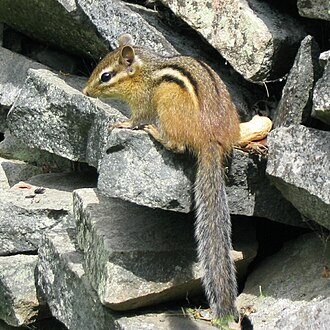
Eastern Chipmunk
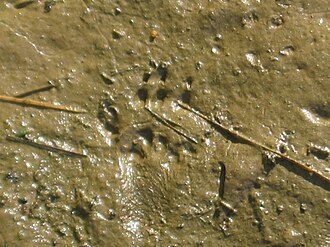
Hind print (five toes) of a chipmunk (Tamias striatus).
Squirrels and Chipmunks (Sciuridae)
Puma
Mountain Lion, Puma (Puma concolor)
Opossum
Opossum (Didelphis virginiana)
Virginia Opossum tracks generally show five finger-like toes in both the fore and hind prints. The hind tracks are unusual and distinctive due to the opossum's opposable thumb, which generally prints at an angle of 90 degrees or greater to the other fingers (sometimes near 180 degrees). Individual adult tracks generally measure 1⅞ inches long by 2 inches wide (4.8 × 5.1 cm) for the fore prints and 2½ inches long by 2¼ inches wide (6.4 × 5.7 cm) for the hind prints. Opossums have claws on all fingers fore and hind except on the two thumbs (in the photograph, claw marks show as small holes just beyond the tip of each finger); these generally show in the tracks but may not. In a soft medium, such as the mud in this photograph, the foot pads will clearly show (these are the deep, darker areas where the fingers and toes meet the rest of the hand or foot, which have been filled with plant debris by wind due to the advanced age of the tracks).
Porcupine
Porcupine (Erethizon dorsatum)
Porcupines are mainly active at night; on summer days, they often rest in trees. During the summer, they eat twigs, roots, stems, berries and other vegetation. In the winter, they mainly eat conifer needles and tree bark. They do not hibernate but sleep a lot and stay close to their dens in winter. The strength of the porcupine's defense has given it the ability to live a solitary life, unlike many herbivores.
Skunk
Skunk (Mephitis mephitis)
Weasels, minks, fishers, and otters

Mink (Mustela vison) Weasels, minks, fishers, and otters
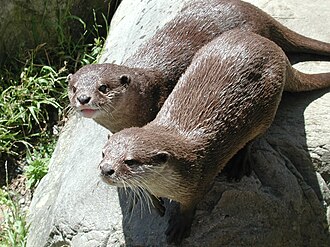
Otters (Lutrinae)
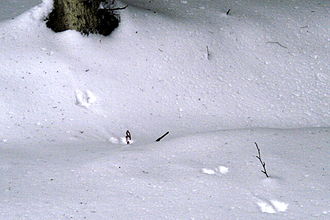
Pine Martin (Martes martes) tracks in snow

Otter scat
Weasels, minks, fishers, and otters (Mustelidae)
- Otter
- Otters have a dense layer (1,000 hairs/mm², 650,000 hairs per sq. in) of very soft underfur which, protected by their outer layer of long guard hairs, keeps them dry under water and traps a layer of air to keep them warm.
- All otters have long, slim, streamlined bodies of extraordinary grace and flexibility, and short limbs; in most cases they have webbed paws. Most have sharp claws to grasp prey, but the short-clawed otter of southern Asia has only vestigial claws, and two closely-related species of African otter have no claws at all: these species live in the often muddy rivers of Africa and Asia and locate their prey by touch.
- Weasels
- Weasels vary in length from 15 to 35 centimeters (6 to 14 inches), and usually have a light brown upper coat, white belly and black fur at the tip of the tail; in many species, populations living at high latitudes moult to a white coat with black fur at the tip of the tail in winter. They have long slender bodies, which enable them to follow their prey into burrows. Their tails are typically almost as long as the rest of their bodies. As is typical of small carnivores, weasels have a reputation for cleverness and guile. They also have tails that can be any where from 22-33cm long and they use these to defend the food they get and to claim territory from other weasels.
Reptiles and Amphibians
Snakes
Snake (Serpentes)
Frogs
Frogs and Toads (Anura)
Turtles
Turtle (Testudines)
Birds
Crows and Ravens
Crows and Ravens (Corvus spp.)
Crows have three toes that point forward and one that points backwards. The front middle toe curves inward and like the rear toe, is longer than the two on the side. The tracks are typically between 5-8cm
American Robin
American Robin (Turdus migratorius)
Pigeons and Doves
Pigeons and Doves (Columbidae)
A good place to find pigeon tracks is beneath an overpass. Pigeons love to nest on the girders of bridges, and the ground underneath is often bare and powdery, so it takes tracks well. They leave copious amounts of guano (bird scat) beneath their roosts as well. Be careful of traffic.
Heron
Heron (Ardeidae)
Herring Gull
Herring Gull (Larus argentatus)
Canada Goose
Canada Goose (Branta canadensis)
Duck
Duck (Anatidae)
Grouse
Grouse (Tetraoninae)
Turkey
Turkey (Meleagris gallopavo)
2
Animal tracks can tell us many things about the animal that made them, including:
- The species
- Its direction of travel
- How fast it was going
- How large it was
- How long ago the animal made the tracks.
- Sometimes tracks can tell the gender of the animal
- Sometimes tracks can tell us the animal's age.
3
Trailing and Identifying
This is a perfect activity for an afternoon hike during a campout. Bring a tape measure so that you can measure the tracks. Bring some powdered plaster of Paris, and a mixing bowl so that you can make casts. You can also bring water, though it is better to keep that for drinking rather than mixing with plaster. You can probably find some water along the way, but just to make sure, you should bring some water for the plaster. You can refill a bottle for plaster making without treating it as long as you make it obvious that it is not fit for drinking (mud is a good indicator).
Instruct your Pathfinders that they are to look for animal tracks along the way. When they find some (or when you do), try to figure out the species by comparing the track to those in a field guide or those depicted in the answers to requirement one. See if you can find more tracks nearby. Which way was the animal moving? How far can you track it?
Walking vs Running
If the tracks are far apart relative to the size of the animal, it was most likely running. Another indicator of running is that the tracks are deeper than those made by a walking creature (running makes the feet strike the ground with greater force).
Measuring Tracks
There is nothing in this requirement to suggest that the tracks of one animal made while running and walking has to be a wild animal, or even that you have to find a set of tracks like these pre-made. If you or a person in your group, or a person you know has a dog, take it to a sandy area and have it walk and run. Then get a tape measure and determine the distance between the tracks.
You can also do this in a parking lot, but in order for the dog to leave tracks, you will need to dip its feet in tempera paint (which is non-toxic and water soluble). It is best to pour some paint in a paper plate. Use two colors - one for the front feet, and one for the back. This will make it a lot easier to tell the front prints from the hind. Lift the dog, and have a helper wet the dog's pads. Then put the dog down and walk it (use a leash). Re-apply the paint, and then allow the dog to run. You should now have two sets of prints from a single animal. Get out a tape measure, and take the measurements.
The standard way to do this is to measure the distance between tracks made by the same foot. The distance between the left rear and the right front is almost meaningless.
4
4a
Do not select a space too close to your campsite, because you do not want to attract them into your camp. Animals need water, so a really good place to select is around a source of fresh water. River banks, stream banks, near ponds, and the shores of lakes are all good places to find animal tracks. However, the place you select must be quiet. Avoid places that are frequented by people.
4b
There may already be some tracks in the area, but you are interested in fresh tracks. Smoothing the ground erases them and allows for fresh prints. A mason's trowel works very well for this in mud. You can also use a trowel on sand, but be careful not to pack it down. The smoother you can make the surface, the finer tracks you will be able to see.
For dirt, it helps if you can sift it onto a flat surface and then lightly wet it. If your garden hose has a "mist" setting, use that after sifting the dirt onto a flat surface.
4c
| Note: The editors of this answer book feel that there is an error in the official version of this requirement. More Information Feeding wildlife is illegal in many jurisdictions
|
4d
| Note: The editors of this answer book feel that there is an error in the official version of this requirement. More Information Feeding wildlife is illegal in many jurisdictions
|
When camping, remember to store your food in a place where the animals cannot get to it. Seal it tightly and place it out of the reach of raccoons and bears (both of which are very clever at getting food). Under no circumstances should you store food in a tent - especially in one that people will be sleeping in. A tent poses no barrier to a hungry skunk.
The morning is the best time to check for tracks. Most forest creatures are nocturnal, so in the morning the tracks will be freshest. Also, human visitors are less likely to trample the tracks before you get a chance to observe and if necessary, cast them.
If you wish to photograph your tracks, it's best to do that in the early morning when the sunlight comes in at an angle. If you wait until the sun is high overhead, the track will not cast a shadow and it will be difficult to see. Turn off your camera's flash or it will completely wash out the shadows and the track will not show up in the photo. If you want to experiment with artificial light, use a flashlight to illuminate the track from the side. Place a coin or a ruler (for scale) next to the track before taking the picture. Take lots of photos (digital cameras are great for this) and hope that at least one of them turns out. It takes a lot of practice!
5
5a
5b
5c
5d
6
Animals leave many indications that they were present. These are collectively called sign. Sign includes:
- Tracks
- Not only footprints, but marks left on the ground by the tail or by other body parts. Beavers, muskrats, mice, and rats all leave tail marks on the ground.
- Scat
- Scat is another word for animal droppings or manure.
- Fur and antlers
- Animals may leave bits of fur behind if it gets caught in a tree's bark, or in thorns. In the fall deer drop antlers.
- Cuttings
- Cuttings are things such as acorn shells which have been nibbled on. Deer and squirrel often leave them behind.
- Scratches on trees
- Bears, members of the cat family, and other predators will sharpen their claws on tree trunks. Sometimes they will do this to mark their territory. Porcupines will eat the bark all the way around the trunk of a conifer, often killing it.
- Damage to trees
- beavers especially, but also other animals will damage trees by breaking branches, chewing twigs, and gnawing bark.
- Scent Posts
- Many animals mark their territory by urinating on trees or other prominent items. If you are walking through the woods and smell a strong musky odor, look around — you may find other sign.
- Carcasses
- Once a predator has had its fill of a kill, it will leave the carcass. Some animals will guard their carcasses though so they can feed on them again after they've digested some of the previous meal, so be careful if you find one.
7
Rabbit vs Squirrel Tracks
Rabbits leave a distinctive pattern when they bound along. The front feet are thrown between the hind feet, but one of them is almost invariably thrown farther back, and the two forefeet often print one behind the other (though sometimes they print side-by-side). A rabbit's hind feet leave larger oval-shaped prints about the size of a man's thumbprint. Since they use the hind feet rather than their forefeet to leap forward, they will push out some material behind them. It may be difficult to make out individual toes in a rabbit print.
Squirrels are also bounders, and like the rabbit, they throw both forefeet between their hind feet. But unlike the rabbit, the squirrel's forefeet generally print side-by-side. The hind feet should print five toes (four finger-like and one thumb-like) and no claws. The forefeet should print only four toes.
In general, a rabbit's pads are shaped like an oval while a squirrel's pads are shaped like a human hand.
If you're lucky enough to find a large set of tracks in the snow, and they lead to the base of a tree, it is almost certainly a squirrel, as rabbits cannot climb trees. The only way a rabbit could leave such a trail is if it had been abducted by aliens (or by an owl!)
Dog vs Cat Tracks
Unlike dogs, cats can retract their claws, and they do so when walking. Therefore, you should expect to find claw marks present in dog tracks, but absent in cat tracks. In general dogs tracks are larger than cat tracks, but you cannot rely on this alone, as there are some very small dogs and some very large cats.
8
Some species of mammal and some species of insect leave scent trails to communicate with others of their species. Canines, cats, deer, moose, alpaca and llama, and others will mark their territory with urine.
Ants lay down pheromone trails that lead to food sources. If you have ever seen a column of ants scurrying about in single file, you can be sure they are following a scent trail.
9
9a
Most perching birds (passerines) hop, though many can both hop and walk (such as ravens, blackbirds, and robins). Jays, sparrows, cardinals, titmice, nuthatches, finches, and many others hop. The tracks of hopping birds often print side-by-side as they tend to keep their feet together as they hop.
9b
Walking birds include crows, most waterfowl and shore birds (sandpipers, egrets, herons, etc.), and most game birds (wild turkeys, geese, ducks, grouse, doves, pigeons, etc.). The tracks of walking birds typically alternate left to right as they lift their feet one at a time.
10
- Feathers
- Droppings
- Nests
- Birdsongs (if you can hear them, they must be present!)
- Eggs or eggshells
- Pellets: Birds of prey regurgitate the indigestible portions of their meals. Birds have no teeth so they rip their prey apart with their beaks and swallow large chunks at a time. Then they digest the soft portions (such as meat) leaving the hair and bones behind to collect into pellets. They cough up these pellets which can be found by the astute observer.
11
Canadian geese can be identified from a great distance by their distinctive V formation.
12
12a
- b. Snake
- c. Turtle
Tracks for these animals are described in an earlier requirement. Perhaps the easiest of these three to find are the tracks of the frog. Find a pond where frogs live, and smooth the mud as described in requirement 4. Another technique is to visit a frog pond and watch as they leap into the water at your approach. Look carefully at the spot from which they leap, and you may be able to see the track. If you have any Pathfinders brave enough, have one capture a frog, and then gently transport it to a muddy area where it can leave tracks. Put it in the center of this area and observe the tracks it makes. Recapture the frog and return it to its home when you are finished.
12d
When most people think of mollusks, they think of clams and mussels. For this honor, it is beneficial to remember that snails and slugs are also members of the mollusk family, especially since they leave easily followed trails.
The best time to find snail or slug tracks is in the early morning. Look on the sidewalk near flower beds for the tell-tale slimy trails these creatures leave as they slip along. As these slime trails dry, they turn white and flaky, often curling at the edges.
That said, it is also possible to find the tracks of clams and mussels. The photo on the right shows the tracks left by a mussel in shallow water (about 10 cm![]() deep) at the edge of a fresh water pond.
deep) at the edge of a fresh water pond.
12e
Find a place where you have seen earthworms in the past, preferably where the dirt is bare (i.e., no grass). Soak the area with water to drive the worms out of the ground. Worms need air, so when it rains (or when a Pathfinder soaks the ground with a hose), they will come to the surface. They might not come out immediately, so you should plan to return a day later to look for tracks in the mud you've made.
12f
Moles are burrowing rodents, and if you have them in your yard, it is not difficult to see where they have been. As they tunnel along, they raise the earth above their tunnels. At the end of the tunnel you may find a hole surrounded by a "mole hill".
References
- http://www.bear-tracker.com/
- The Complete Tracker by Len McDougall, 1997. ISBN 156731-326-4
- Missouri Department of Conservation

